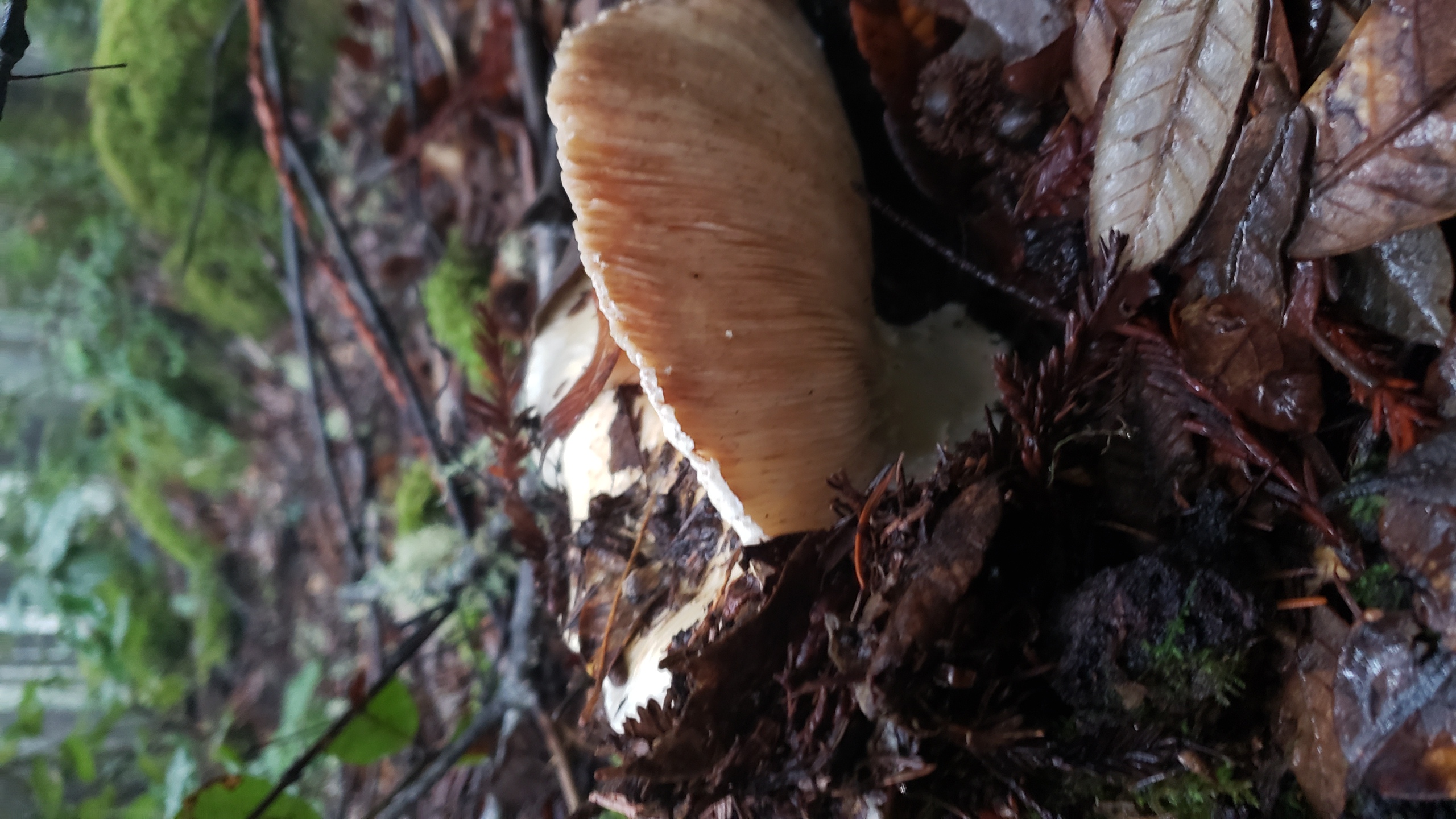
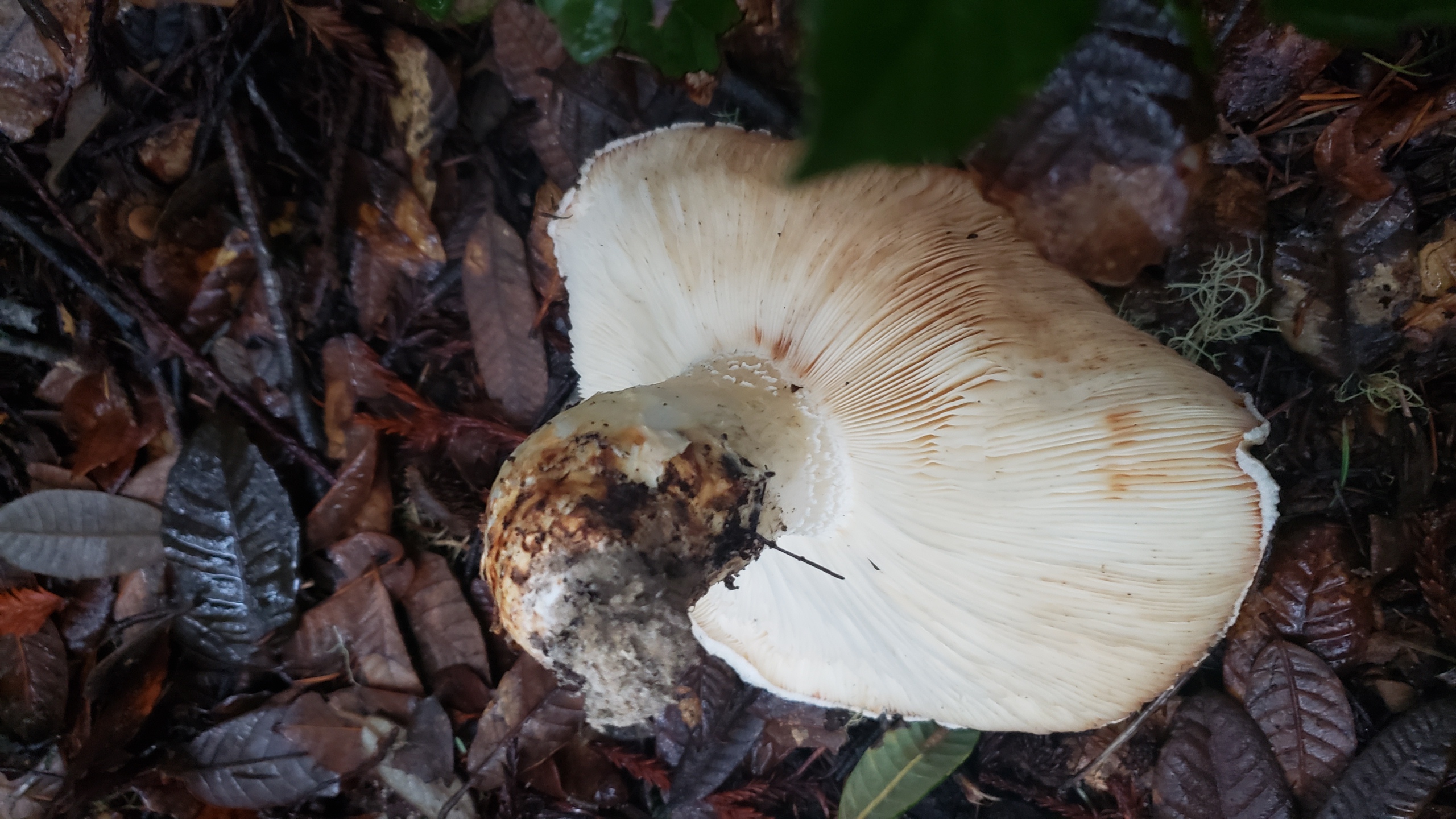
This is a compilation of photos from my mushroom foraging trips during the holidays. I'll start with the most edible, and then descend into darkness
White matsutake is probably the most prized mushroom you can find in the west coast states


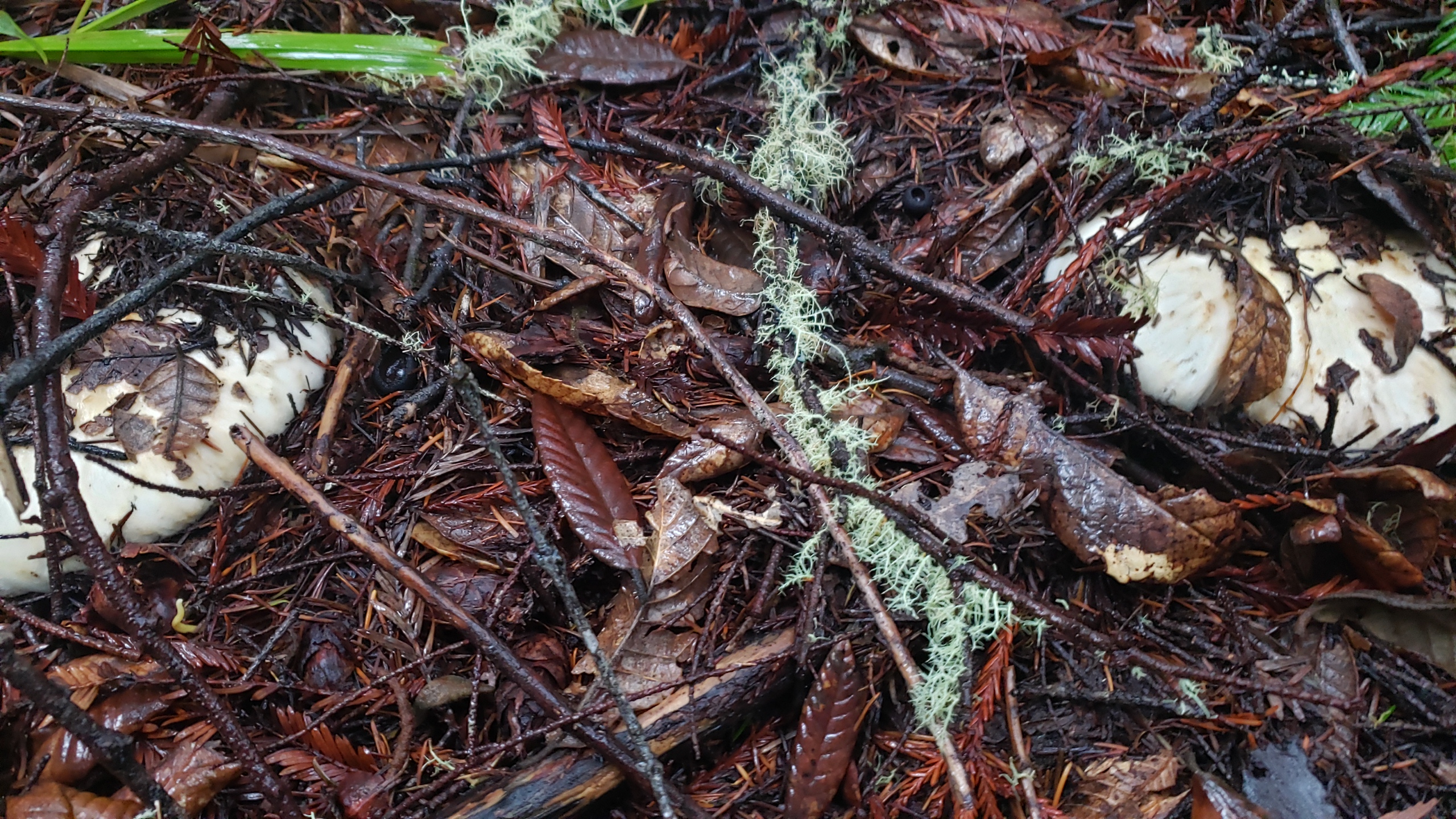
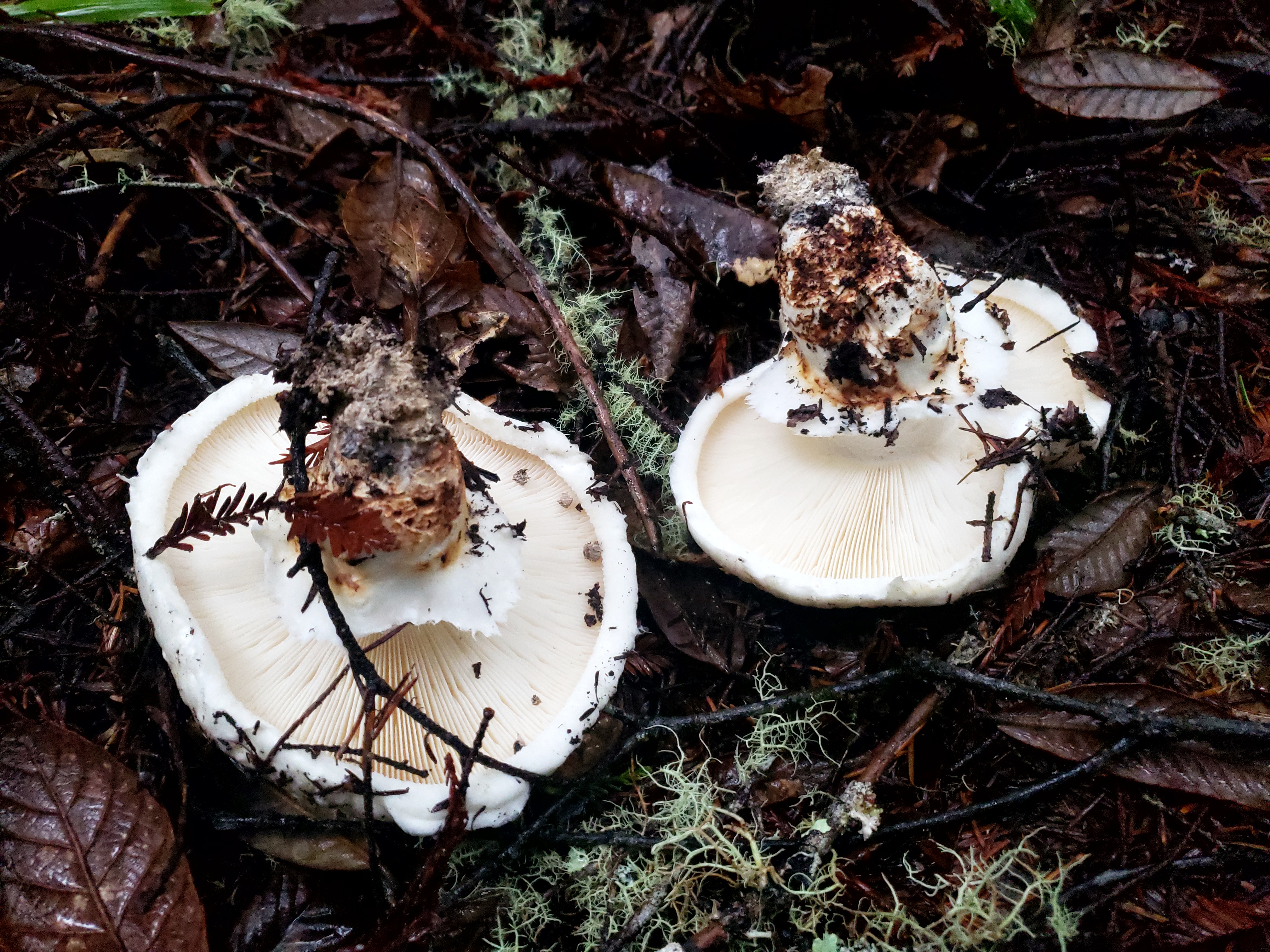
Visually it doesn't look very different from some white species of Russula or Lactarius, especially before you get a chance to examine the foundation of its stem; but what makes it easy to identify is the smell - a mix of vinegar, cinnamon, and gym socks. It has a very deep, rich flavor; Best ways to cook it is to coat it with soy sauce / canola oil with salt and some seasoning and baking in in the oven till it turns slightly brown; alternatevely, thinly chopping and pan frying it with a generous amounts of olive oil, and then sealing in jars with said oil, is a good way to preserve it for at least a few months (this method of preservation is a bit of a botulism hazard, but if it is hot as you pour it into jars, risk should be minimal)
Younger specimen have more flavor. As you see, the 2 specimen on the last picture still have a stripe/leftovers of a veil; it means they are younger, and therefore more valueable/delicious
Pacific golden chanterelle, though genetically distinct from regular golden chanterelle, or Cantharellus cibarius, though it looks and tastes almost exactly the same. Amazing mushroom with great flavor and texture
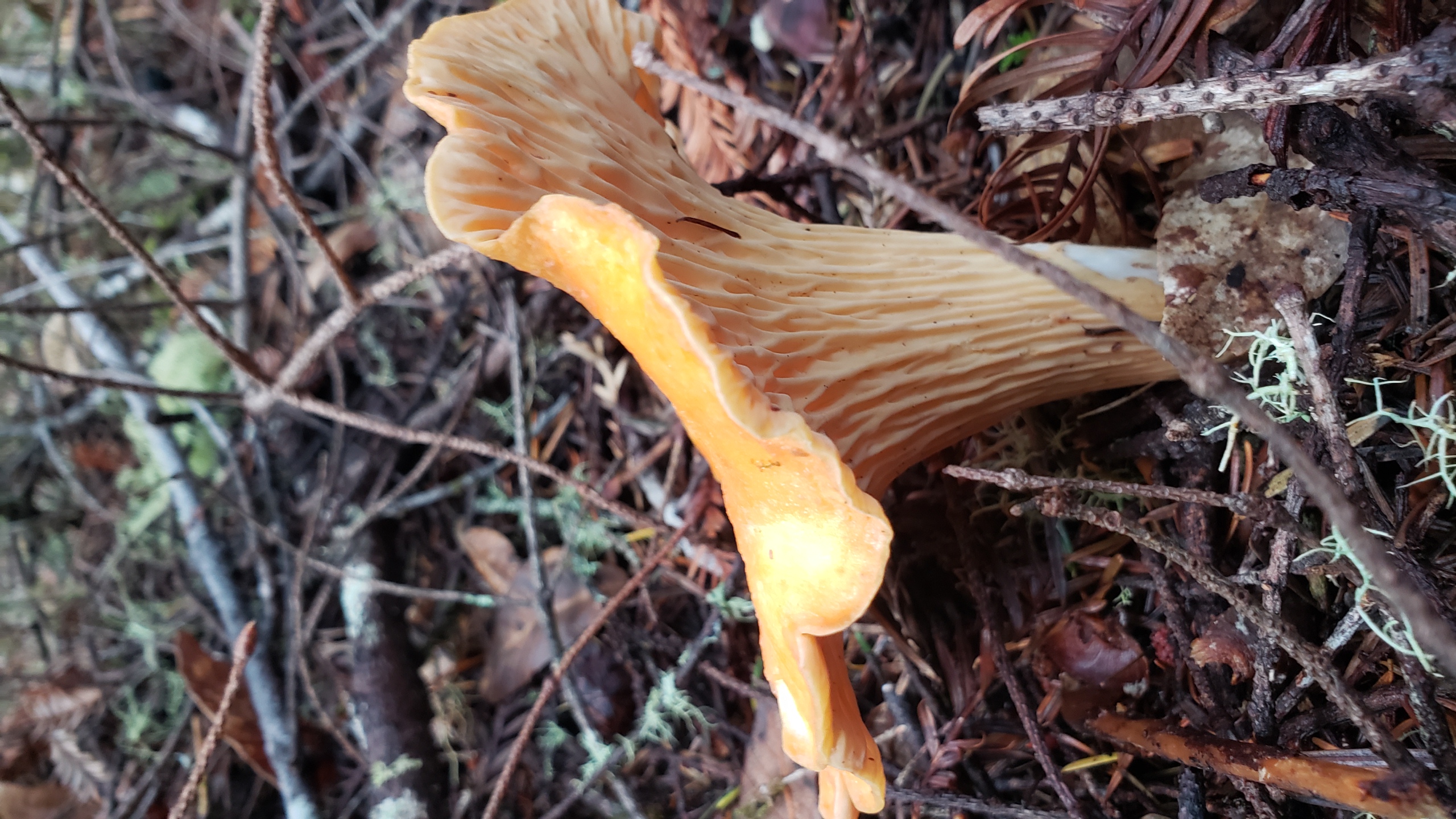
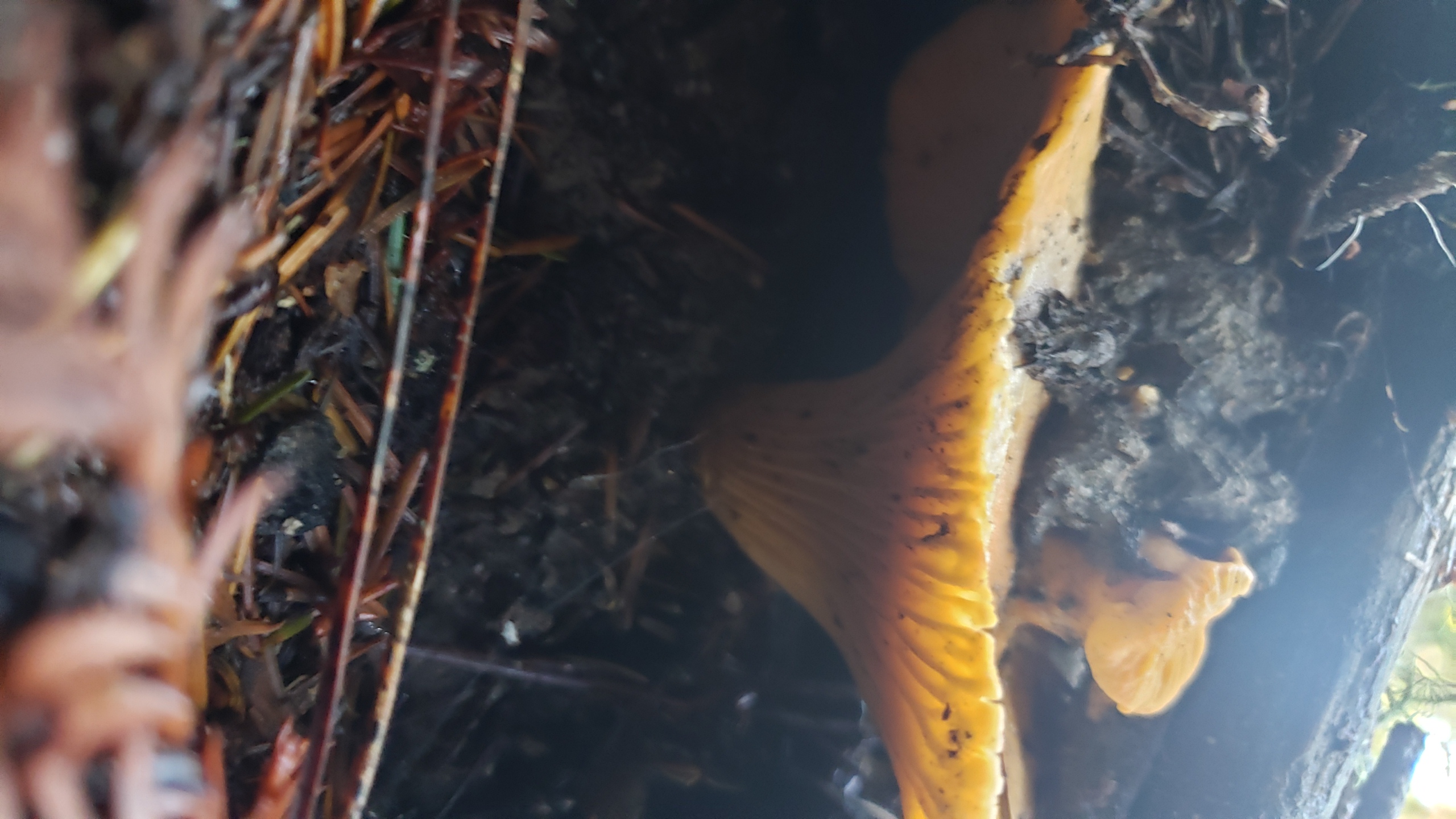
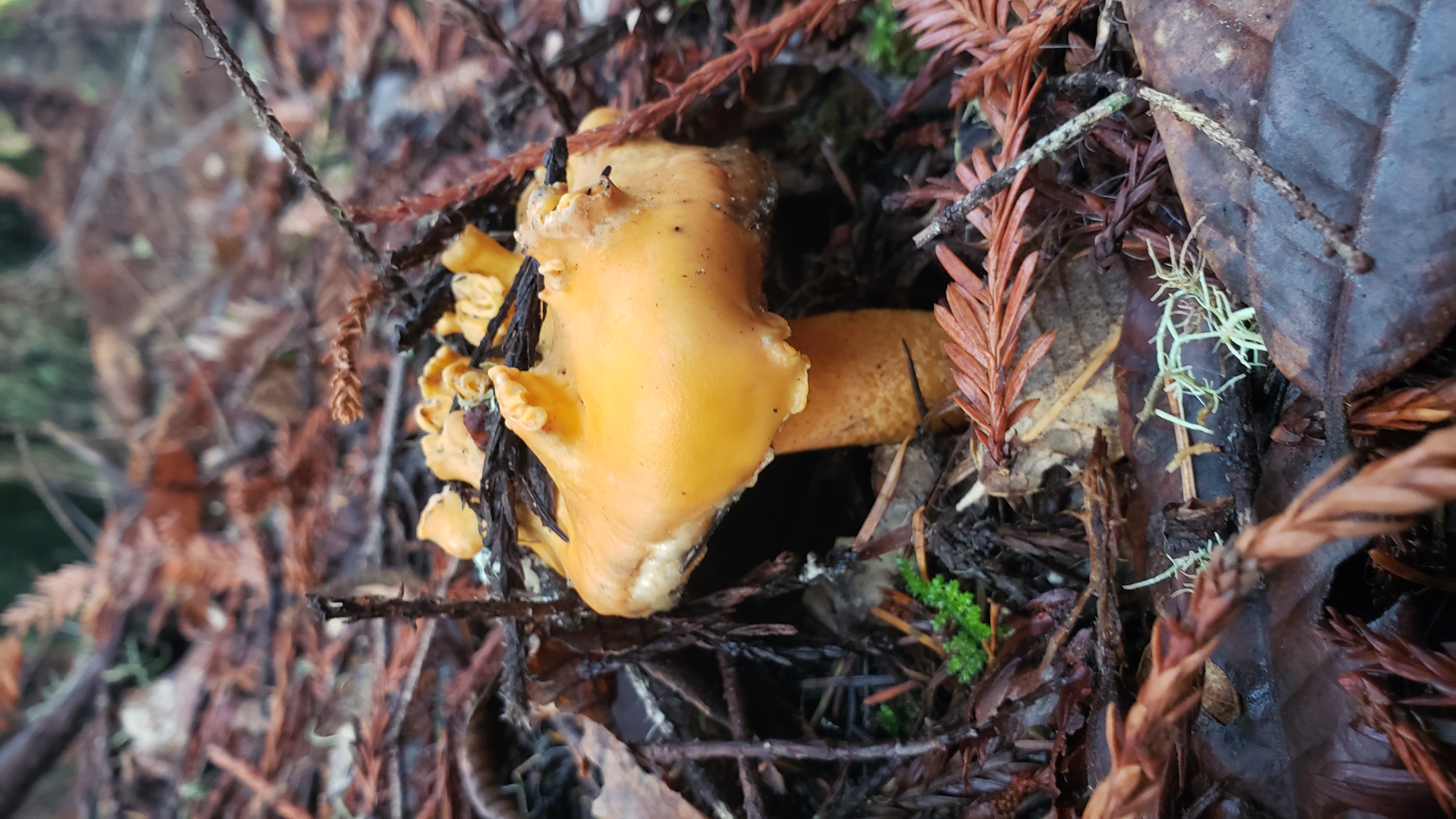
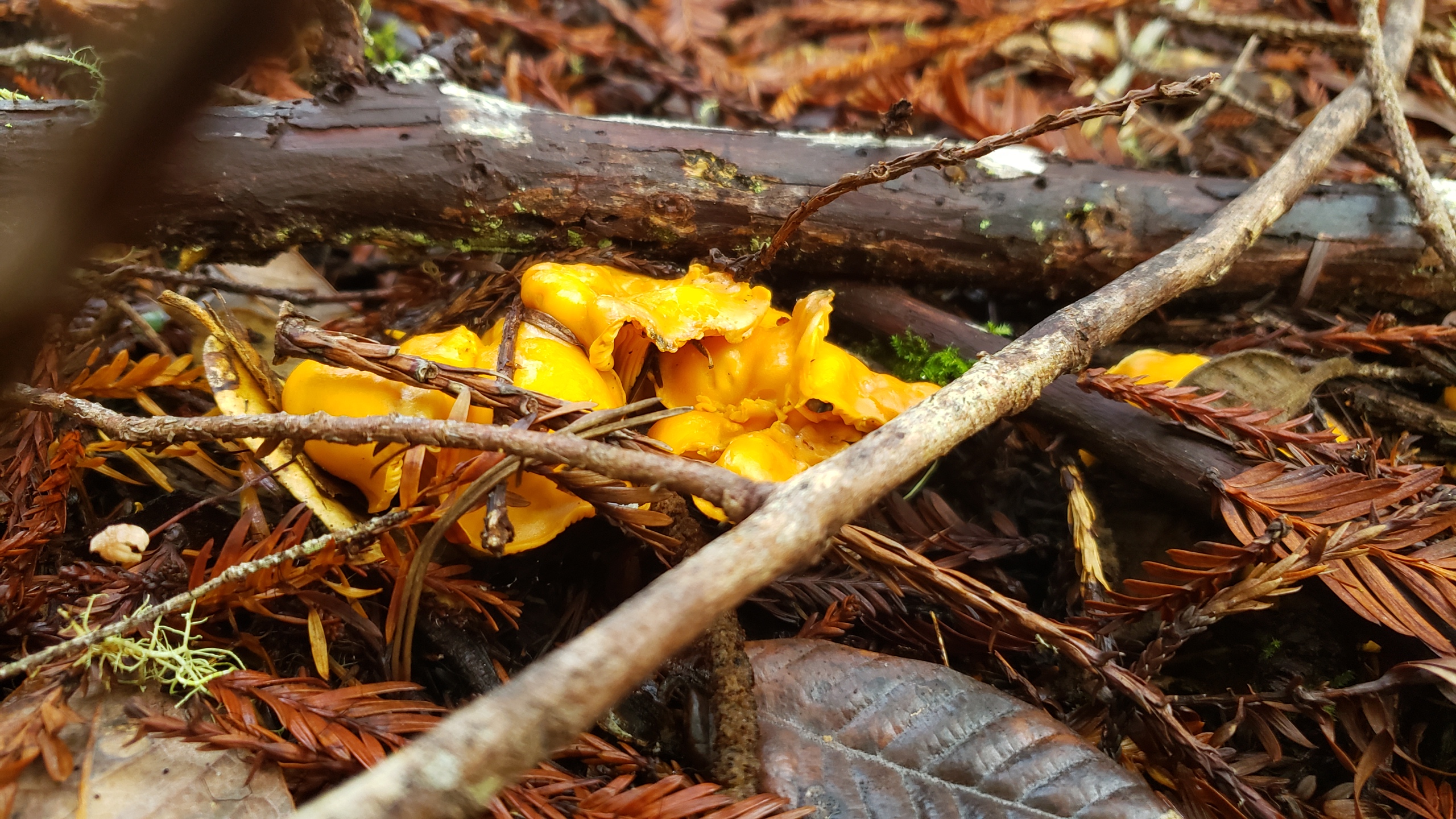
or possibly Craterellus pallidipes; those species are closely related, and hard to tell apart
Known as Yellowfoot, or Winter Chanterelle, tastes similar to the golden chanterelle, but is much smaller, so you'd have to collect a lot; On the other hand, they are much more abundant than chanterelles in coastal Sonoma
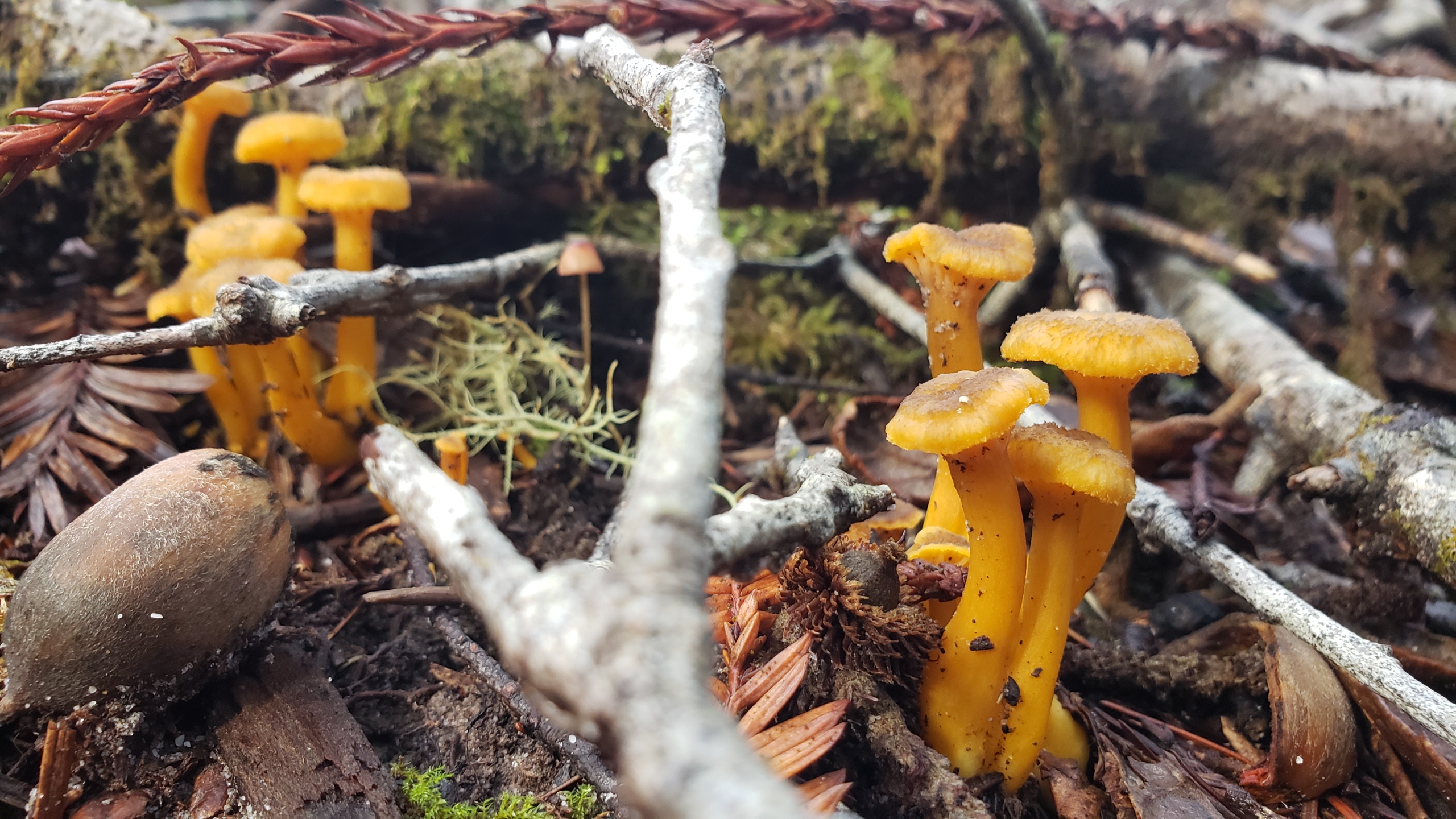
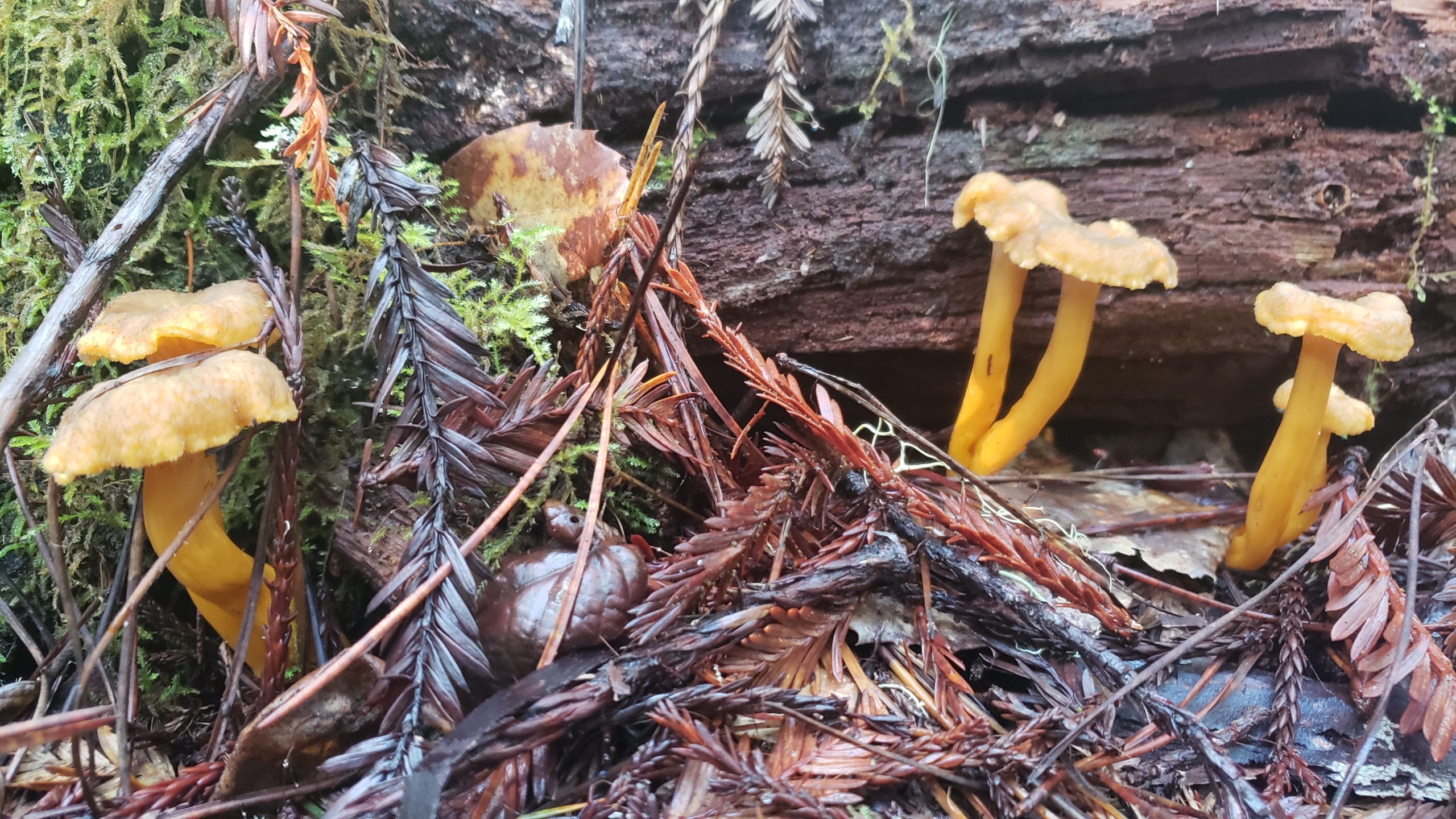
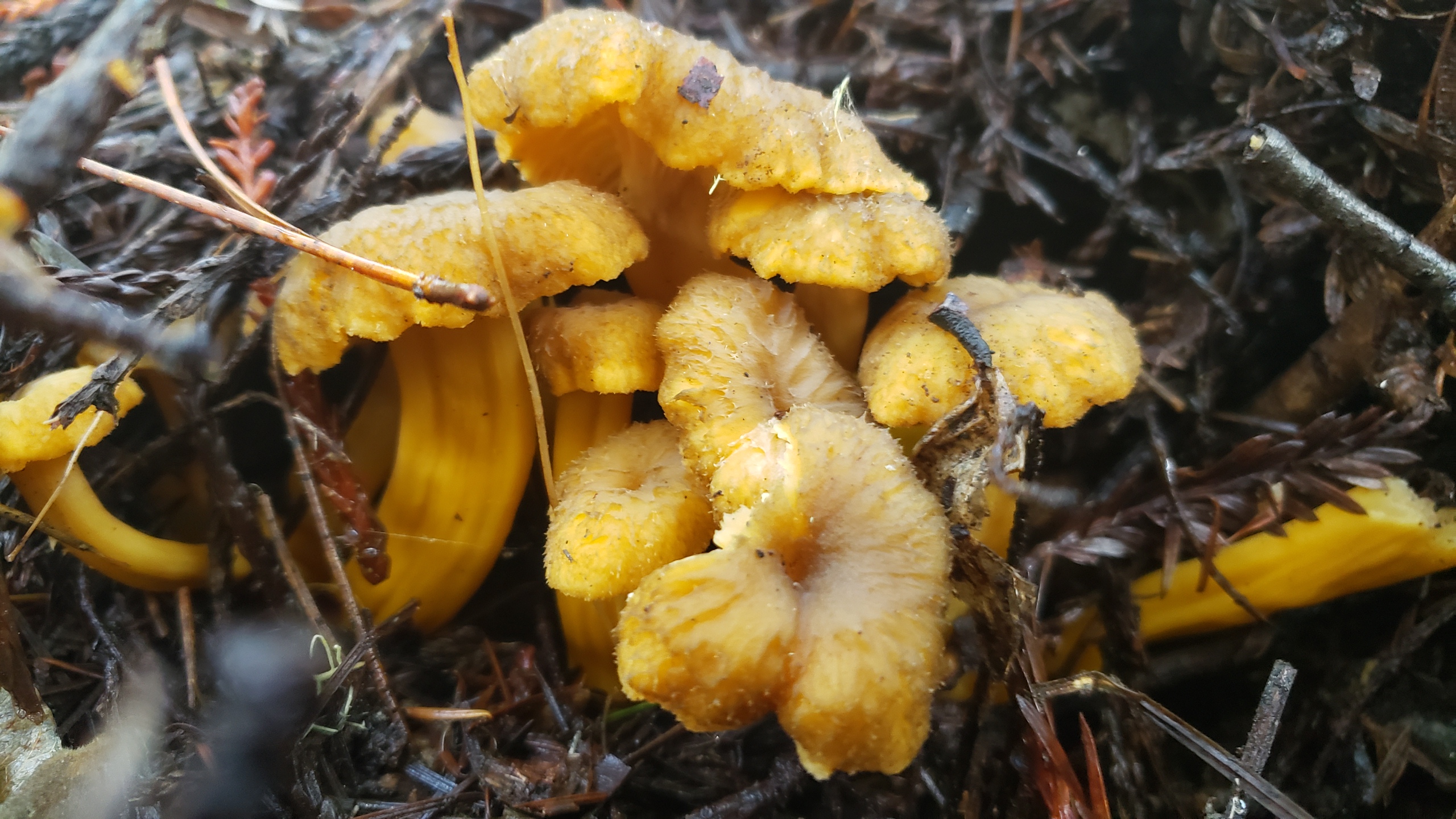
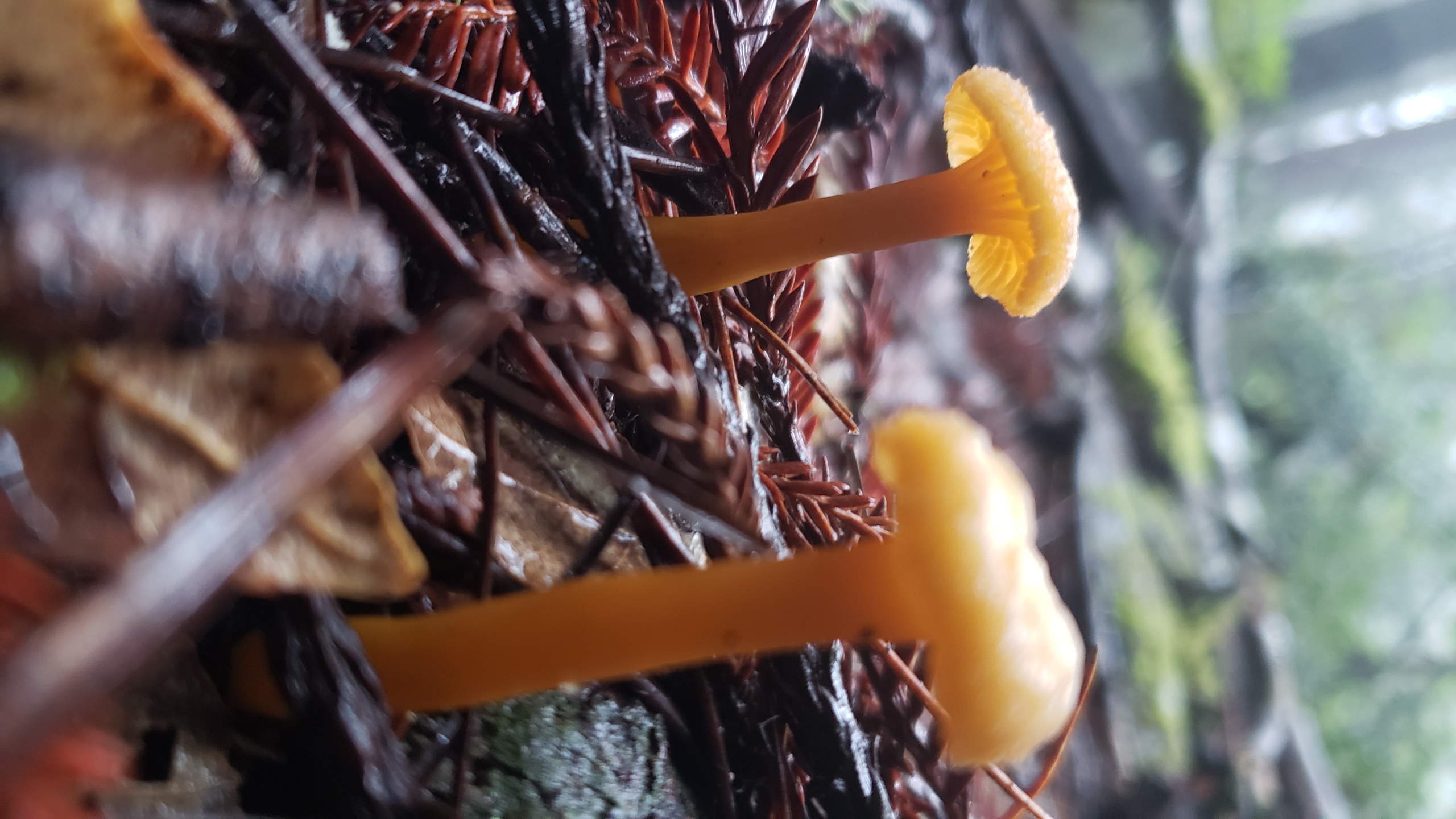
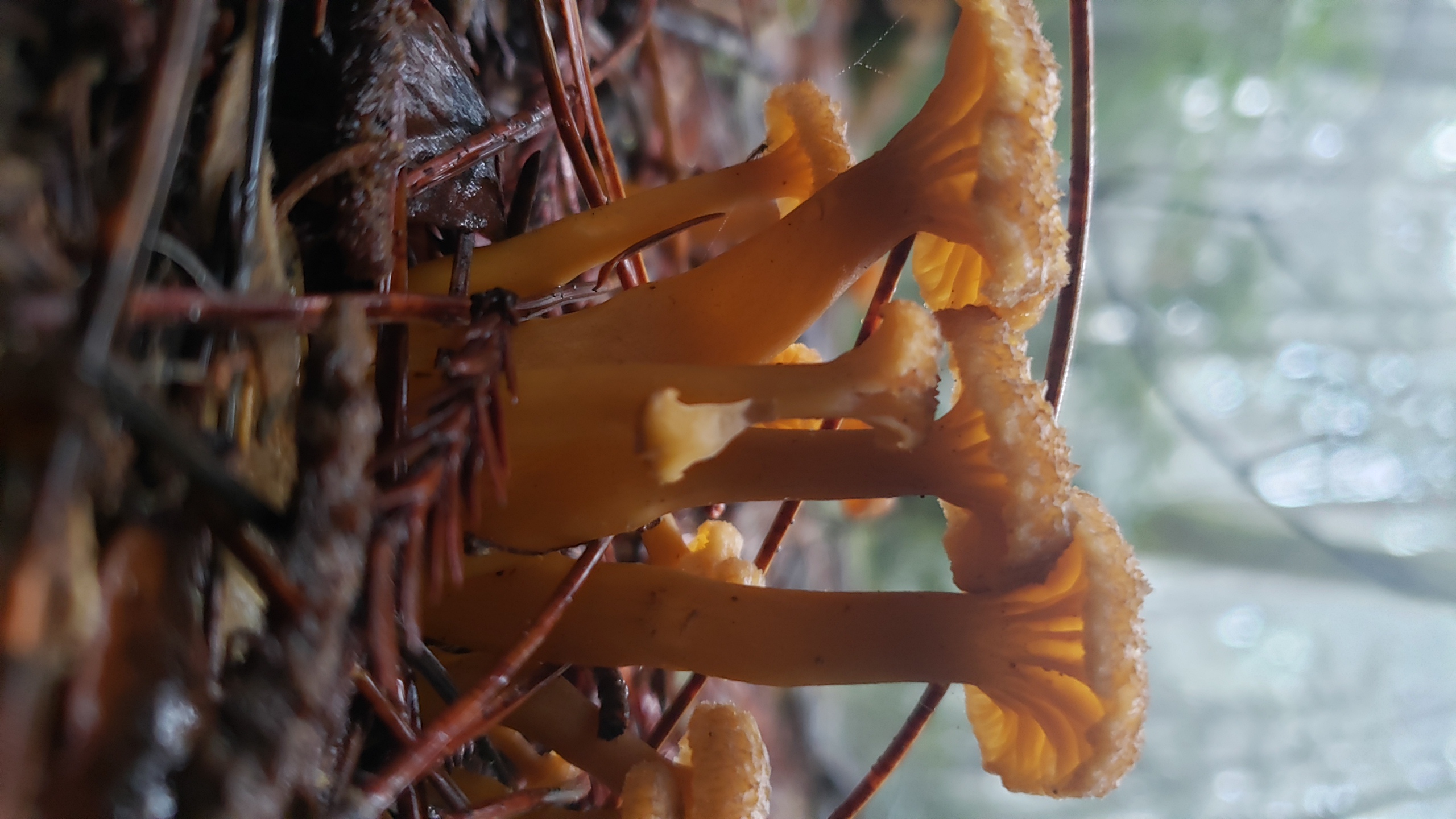
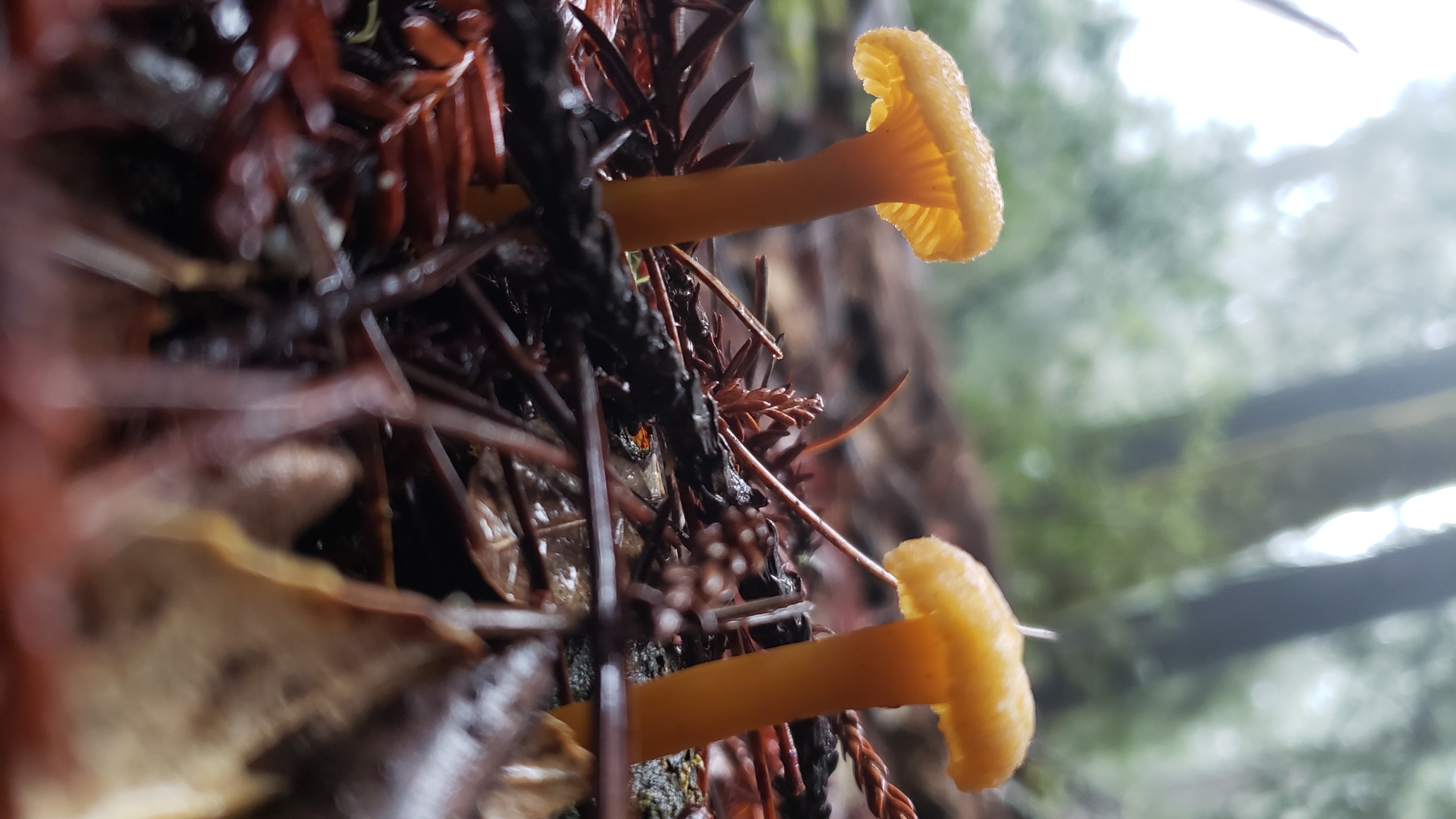
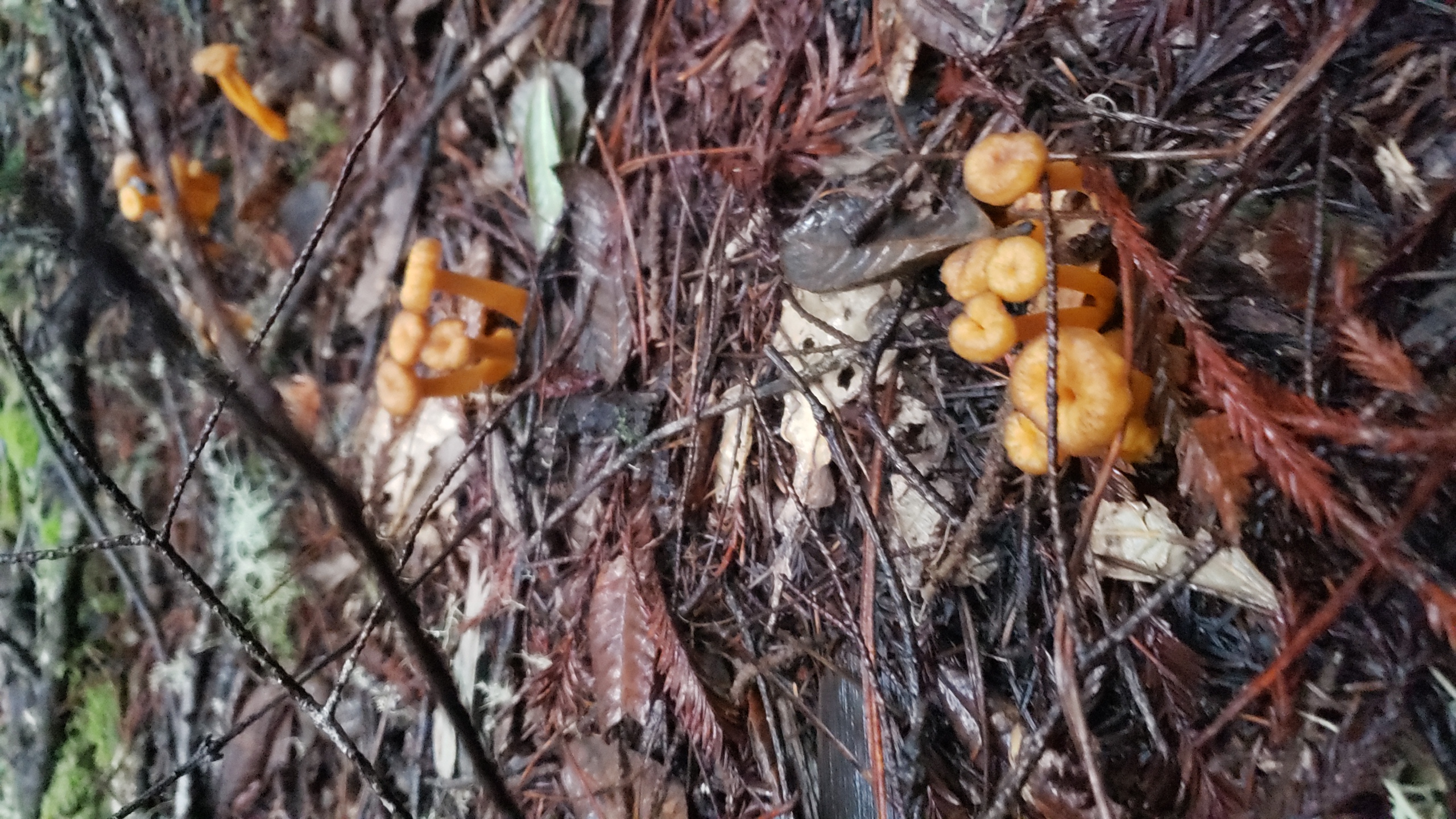
Also known as depressed hedgehog, which is the most russian name possible in the universe. Hydnum species are very beginner friendly, since they are hard to confuse with anything else; if a mushroom has teeth under the cap, you can be sure it's edible; if it isn't made of white jelly, you can also be sure it's tasty
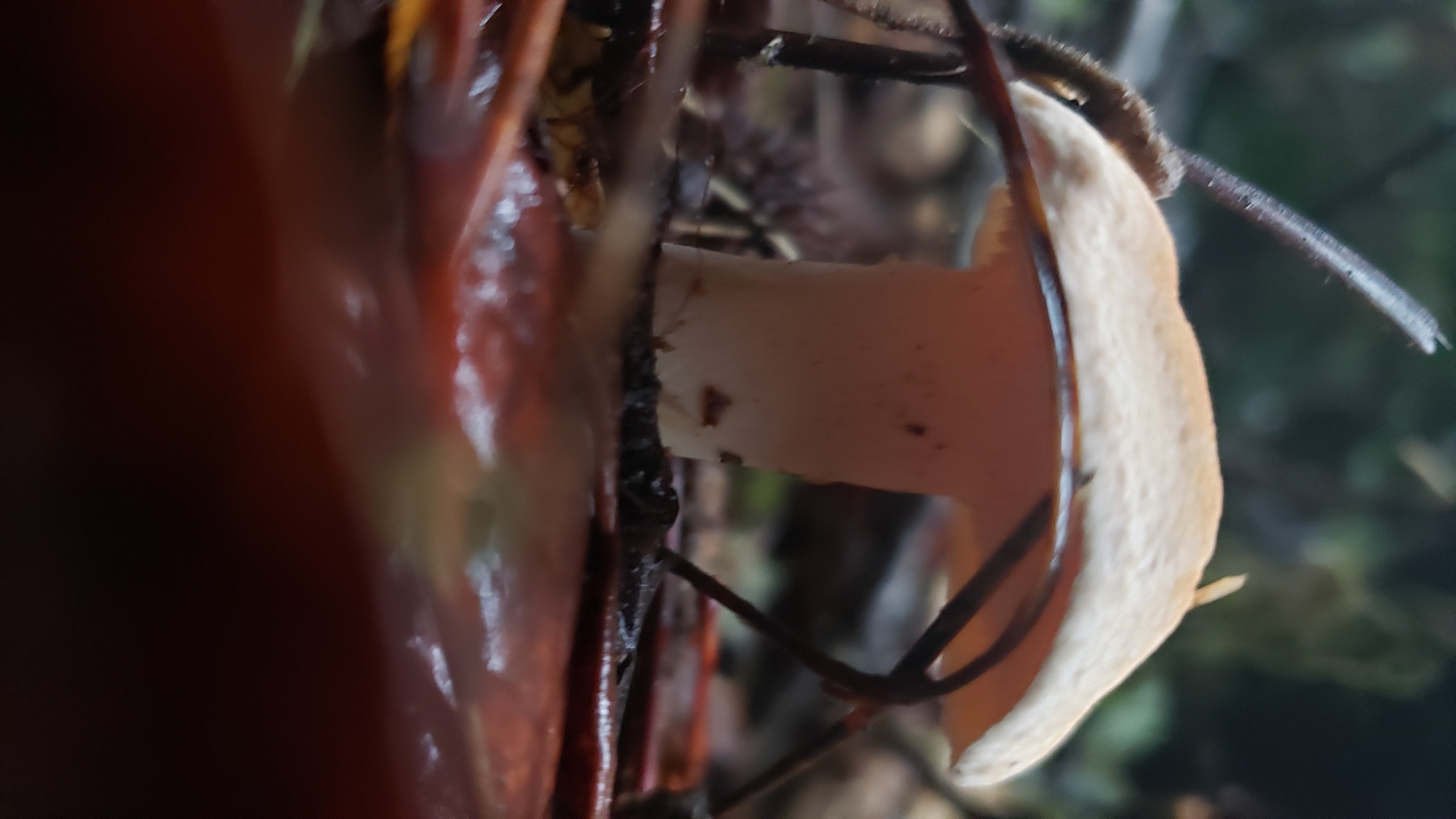
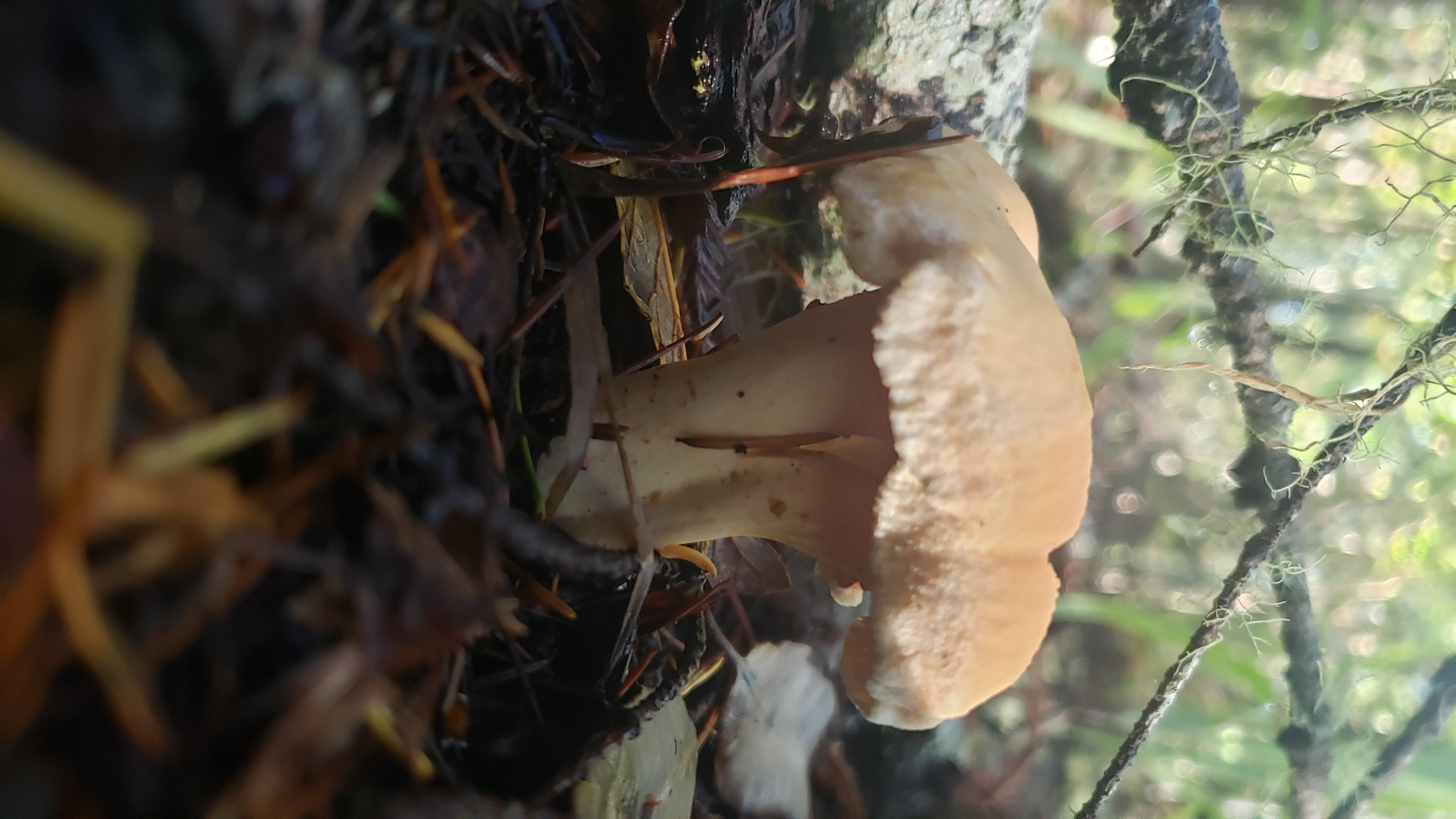
Also known as pig ears, this mushroom is distantly related to chanterelles
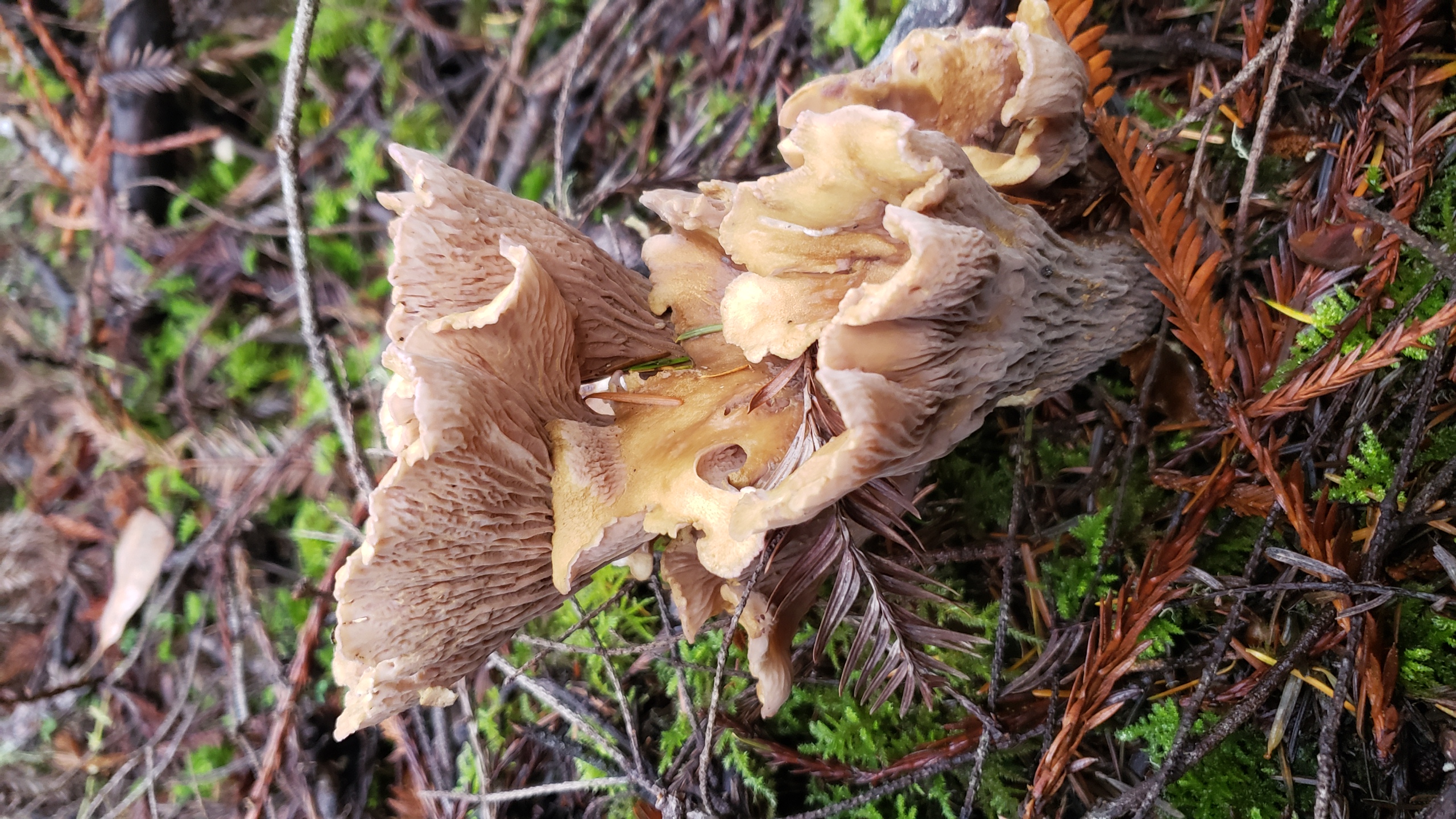
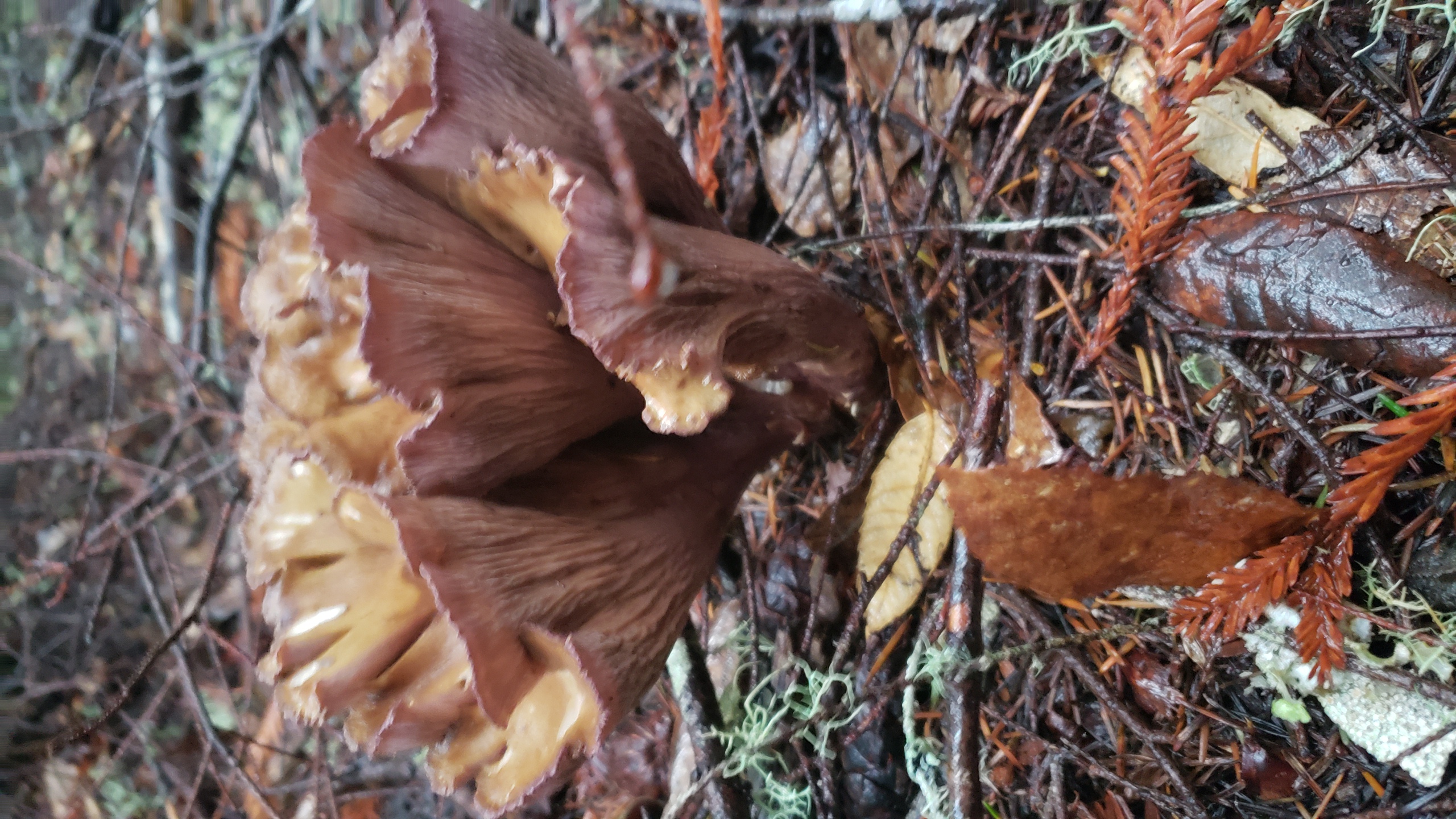
The taste is much less flavorful than chanterelles, but still somewhat pleasant; However, the main problem with this mushroom is that it's the favorite of all sorts of maggots; It's extremely common to find it hollow inside and filled with maggot made tunnels. So, I normally don't bother bringing this one home
Jelly mushrooms are usually edible; There are some poisonous varieties, but the ones feaured today are not among them
The jelly mushrooms, for the most part, have no flavor, but some people like adding them to a stew to make it more thick and protein rich
First of all, there's Pseudohydnum gelatinosum, which is very common to the forests of coastal california. It's called pseudohydnum, because it looks like hydnum that we covered earlier, except for that it's made of white jelly
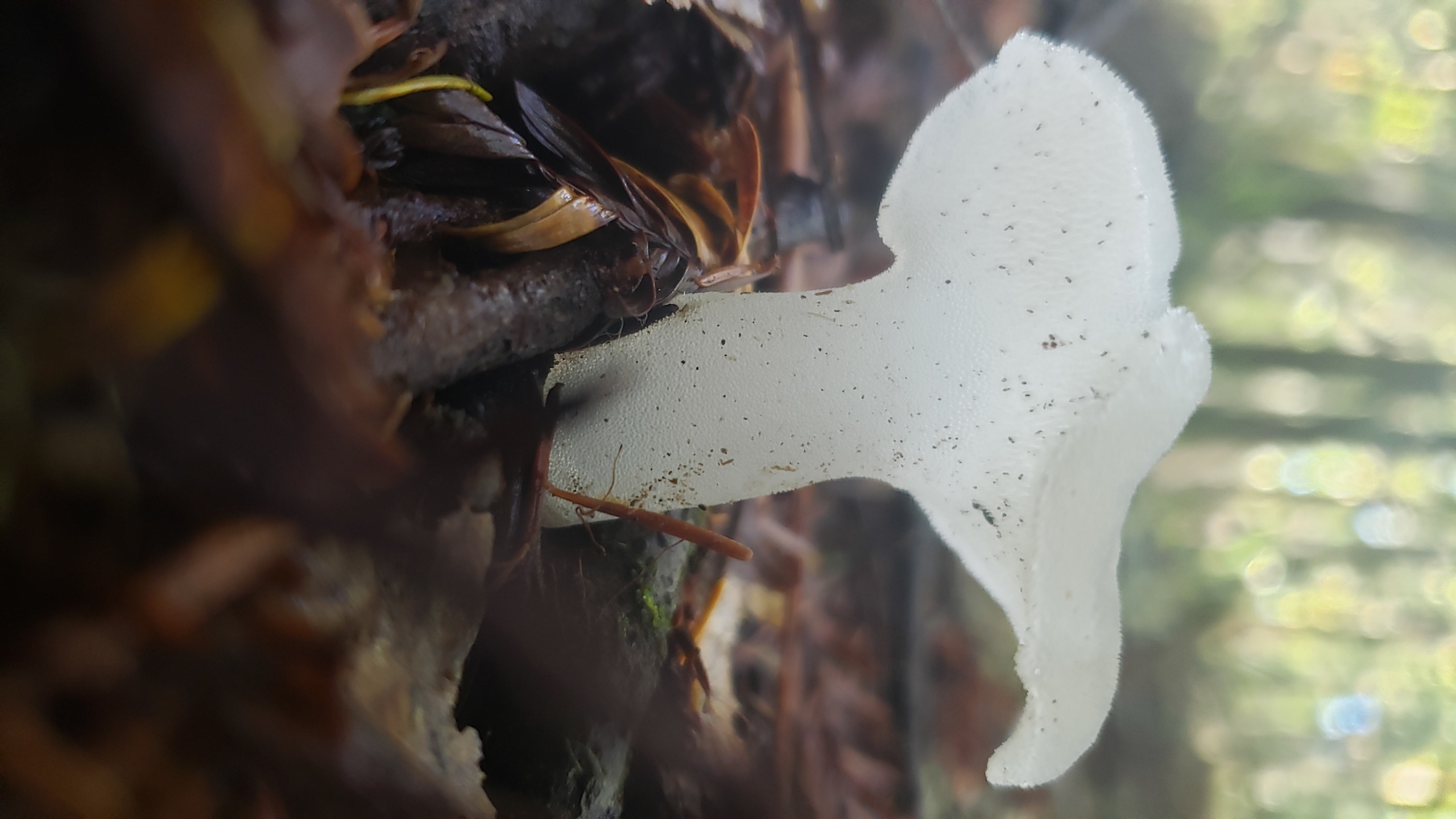
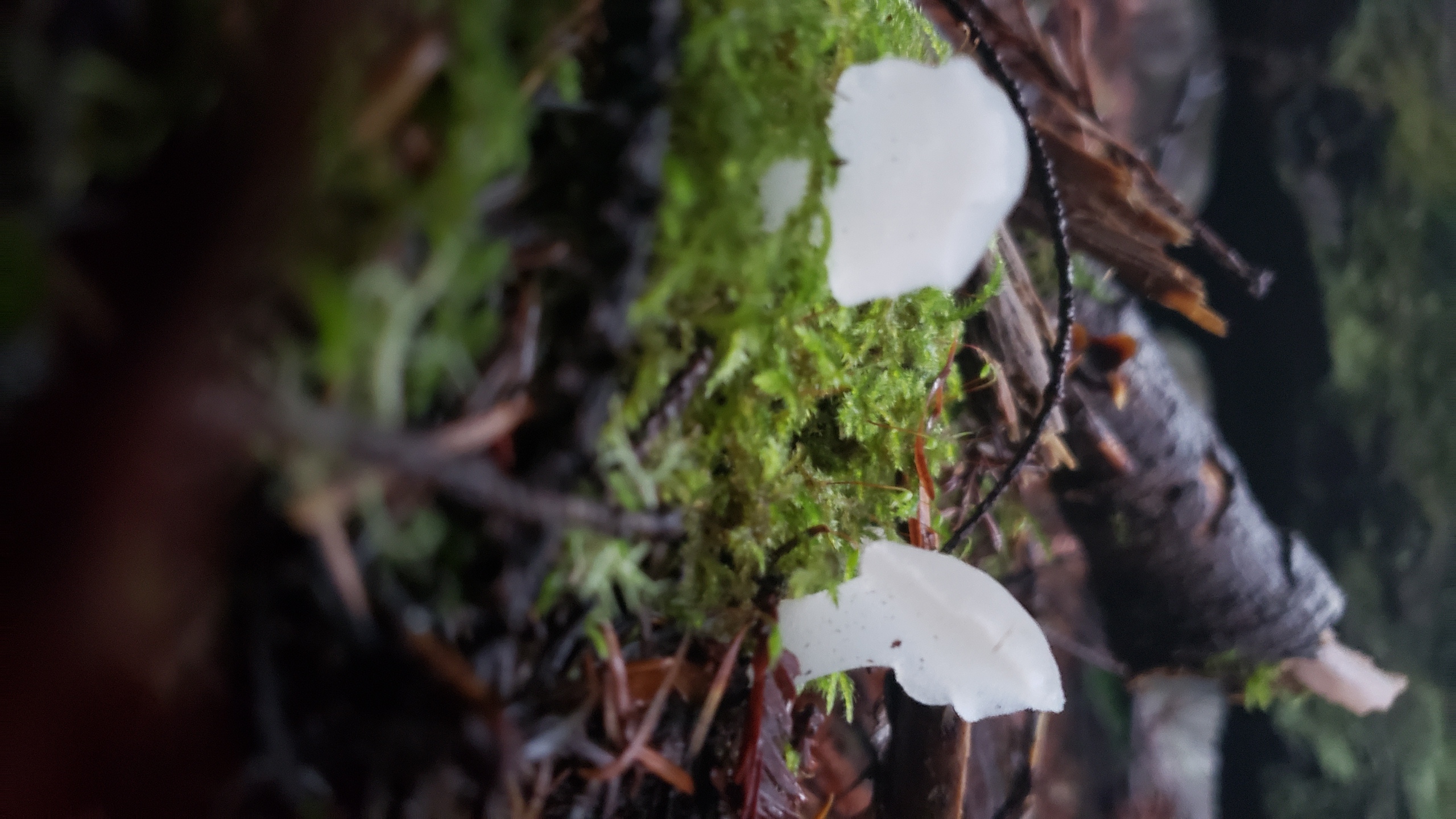
Then there's several genuses of orange jelly; they are often colloquially referred to as witch's butter, though strictly speaking witch's butter is only one species, Tremella mesenterica (I'm not a huge expert in telling apart jelly fungi, but i think the real witch's butter is on the first vertical picture)
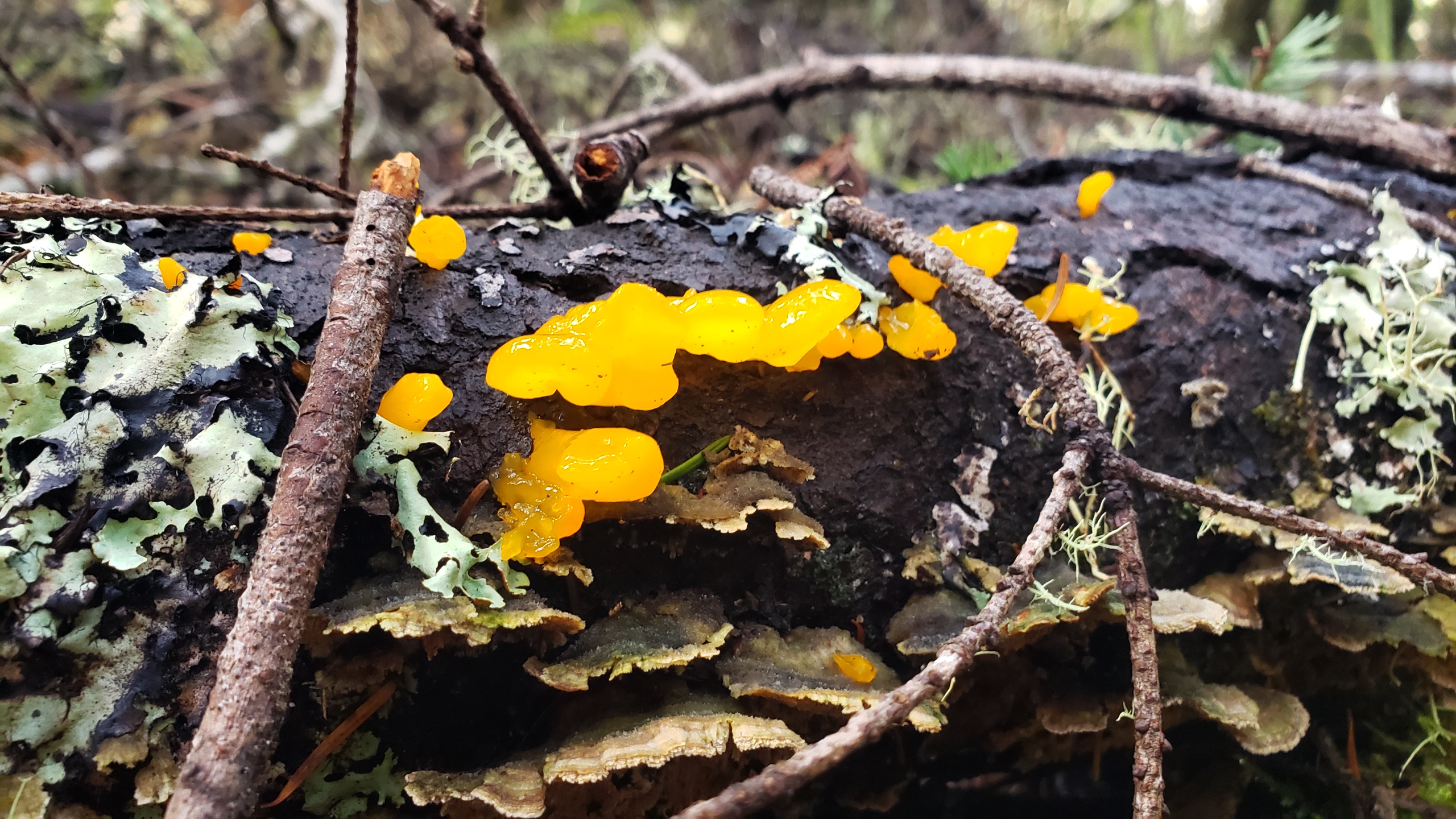
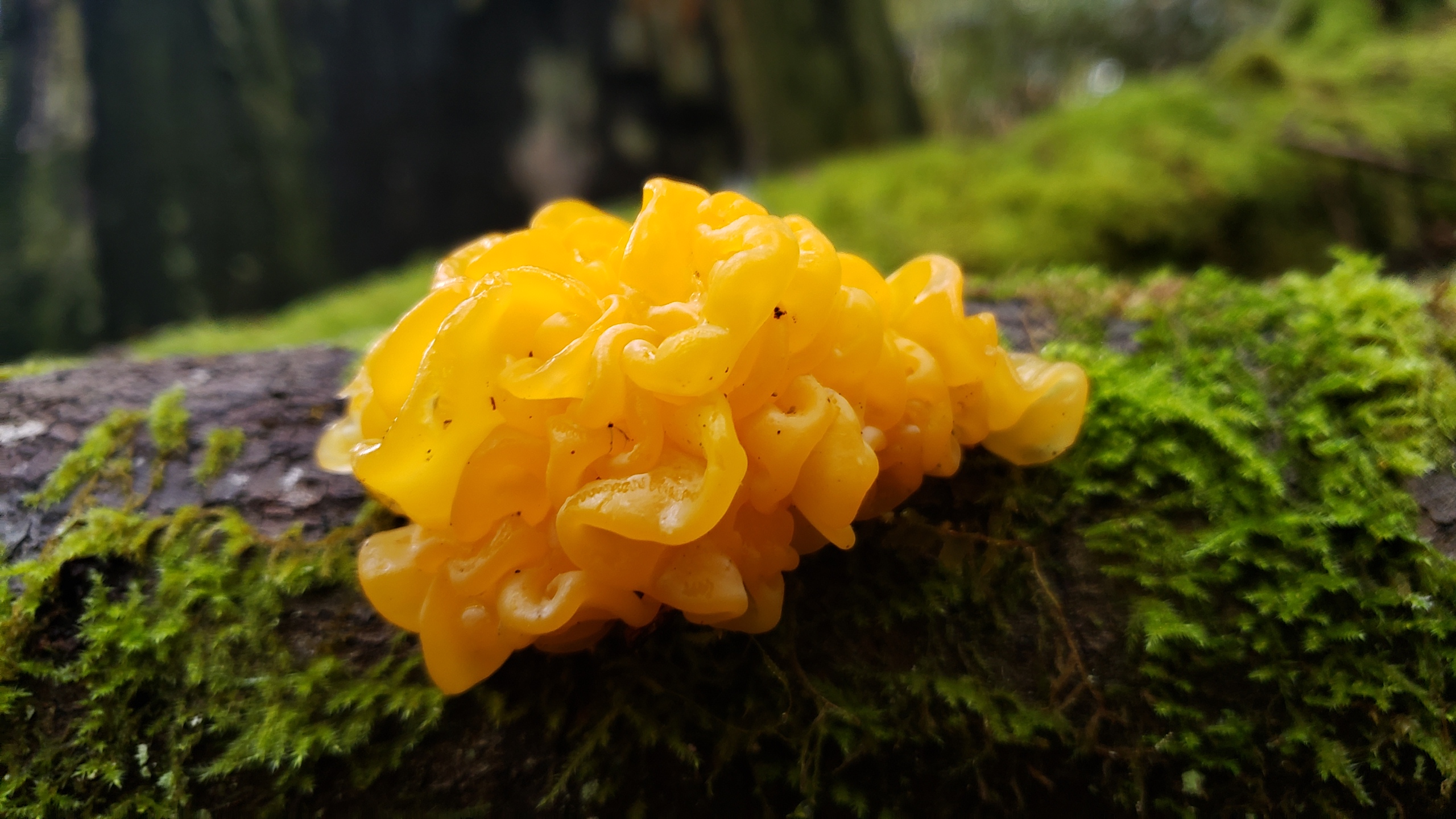
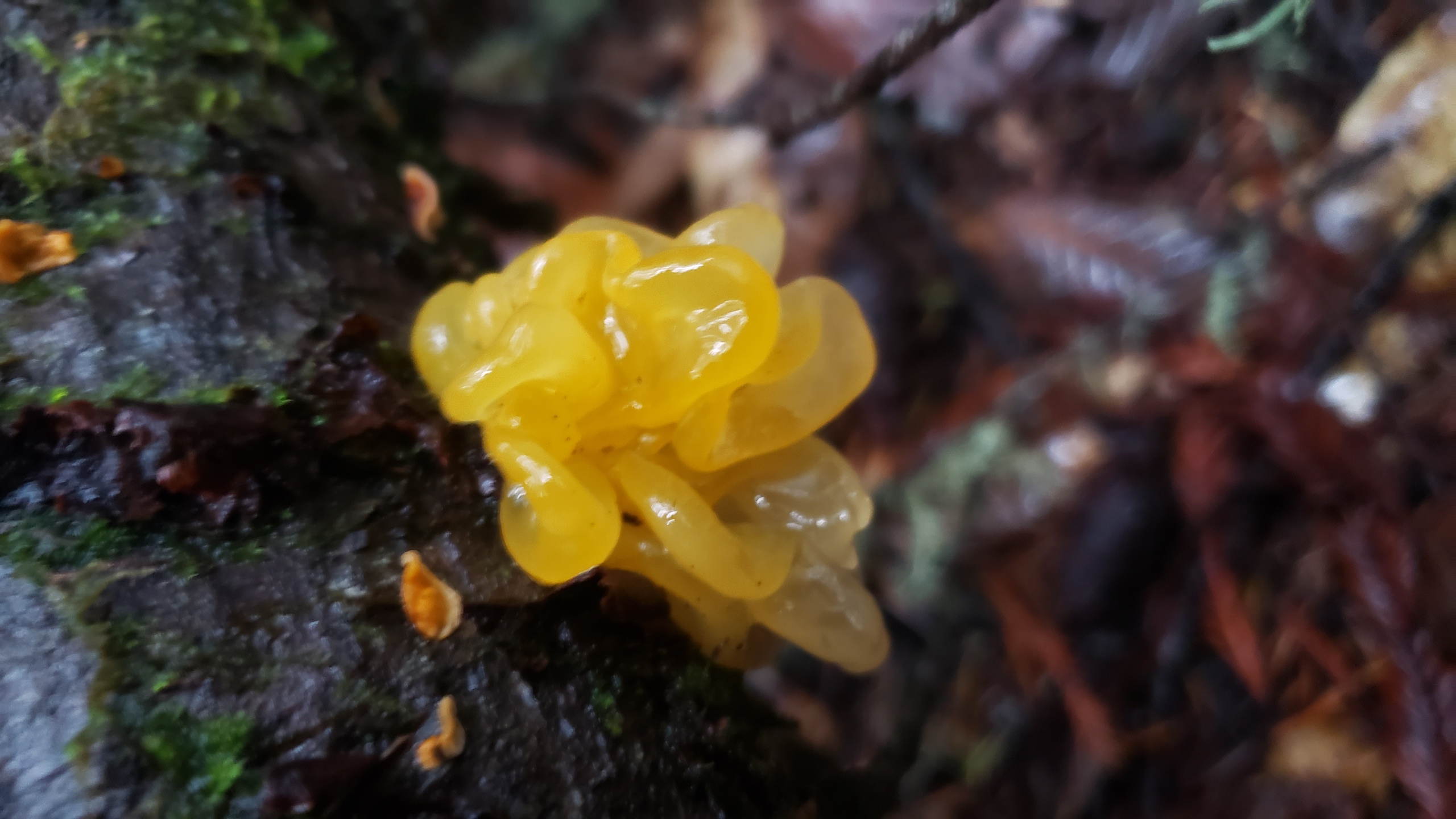
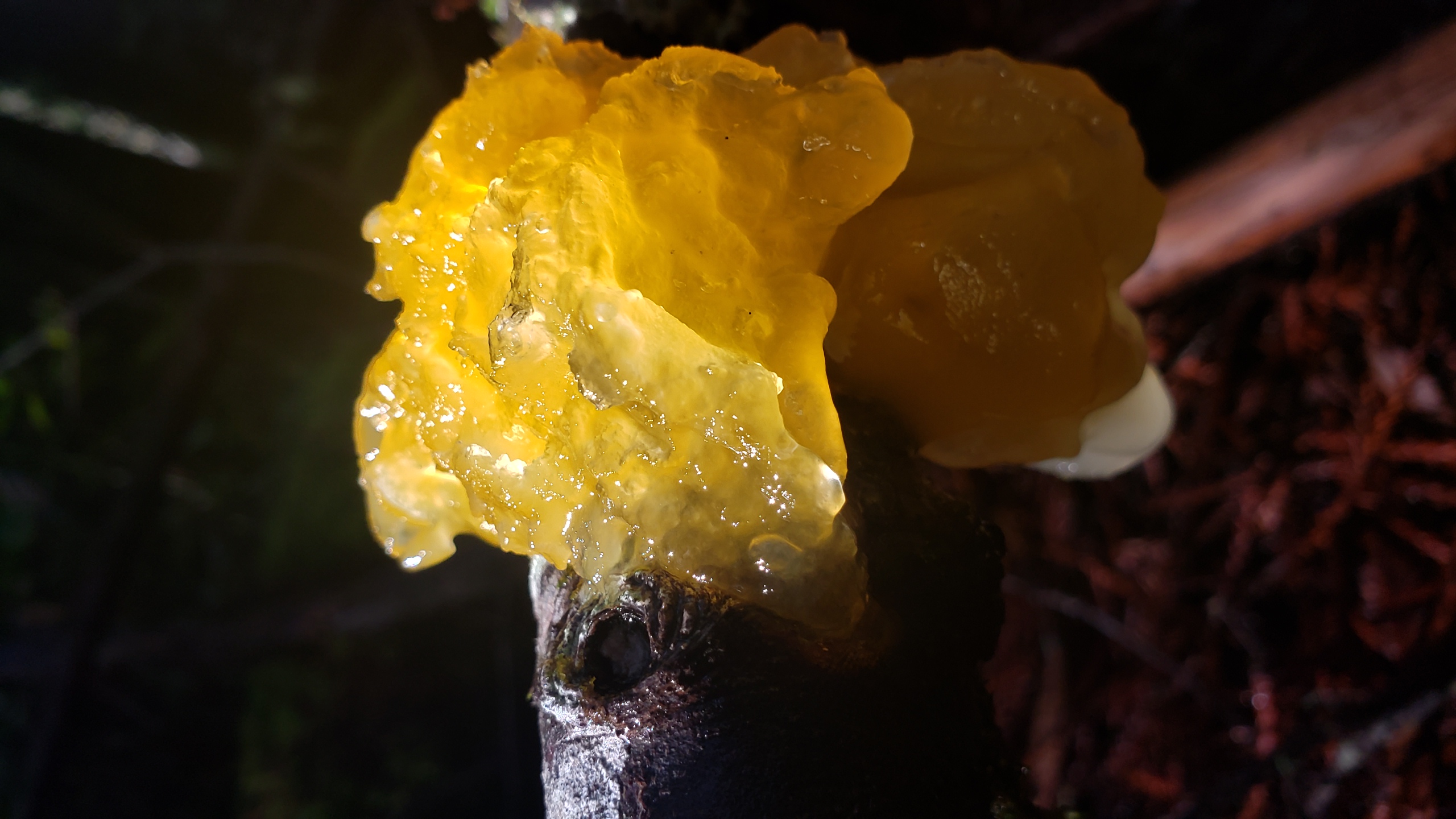
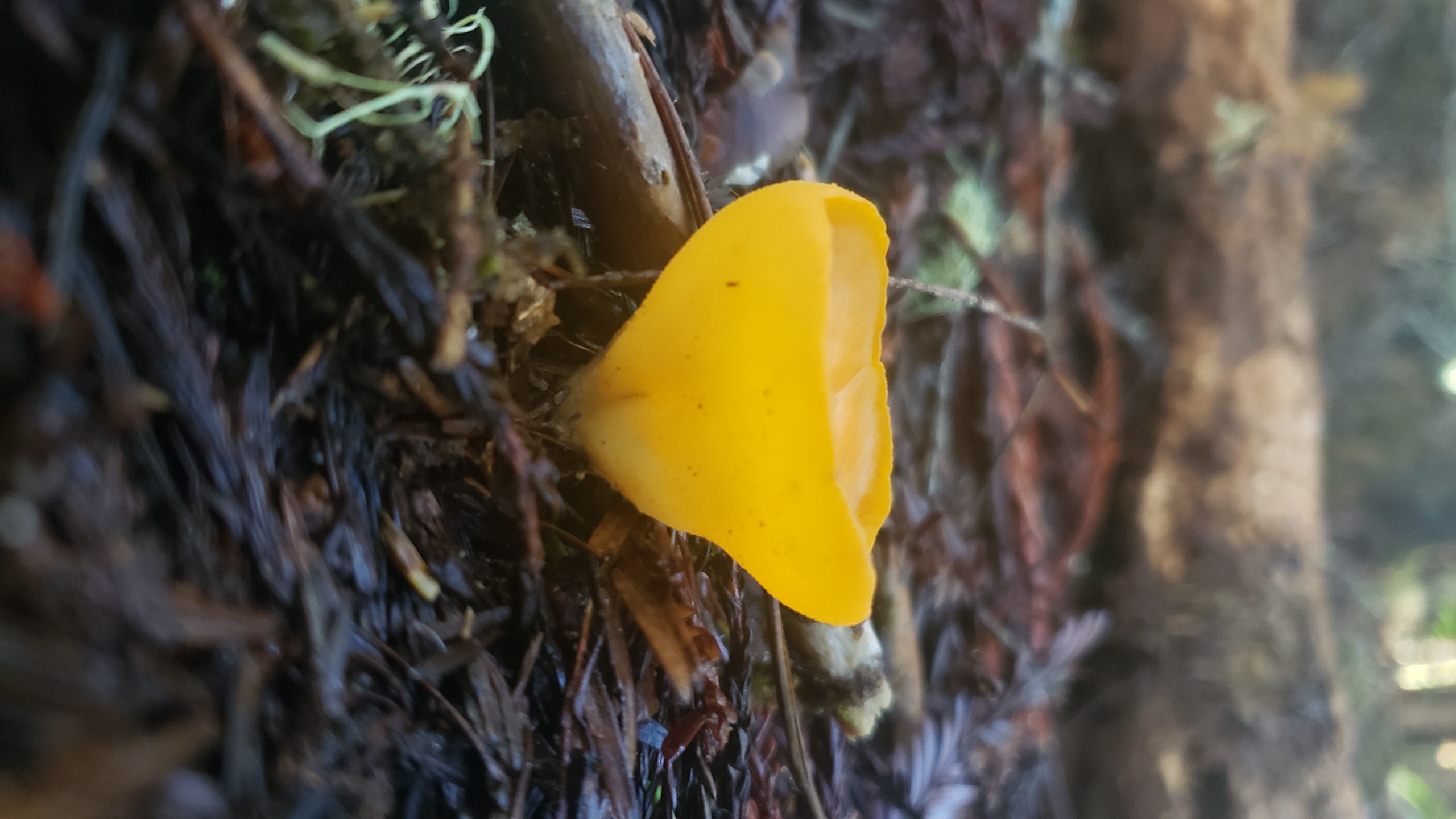
In these group we have mushrooms of 'debated edibility' - some people casually eat them, while others experience various degrees of digestive issues after consuming them; Most likely the reaction is based on some genetic predisposition. Anyway, you probably won't die from them, so if you're feeling very adventureous knock yourself out.
Is colloquially named wooly chanterelle, even though it is
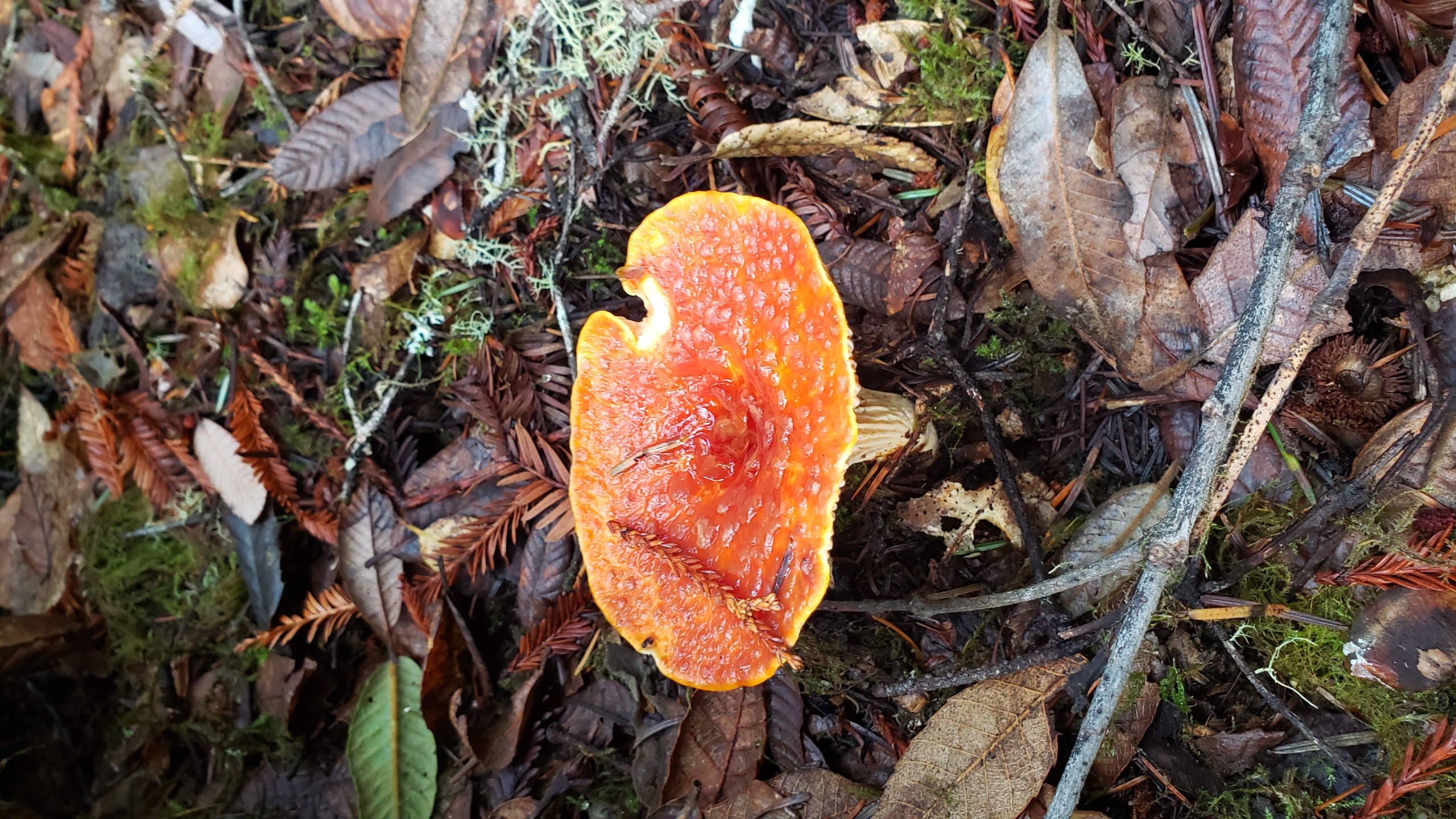
They do resemble golden chanterelles to some degree, but the differences are:
Also known as wine colored agaricus
Well, Agaricus species normally don't taste like much, so probably not worth risking explosive dhiarea over it. But they are pretty, in a way
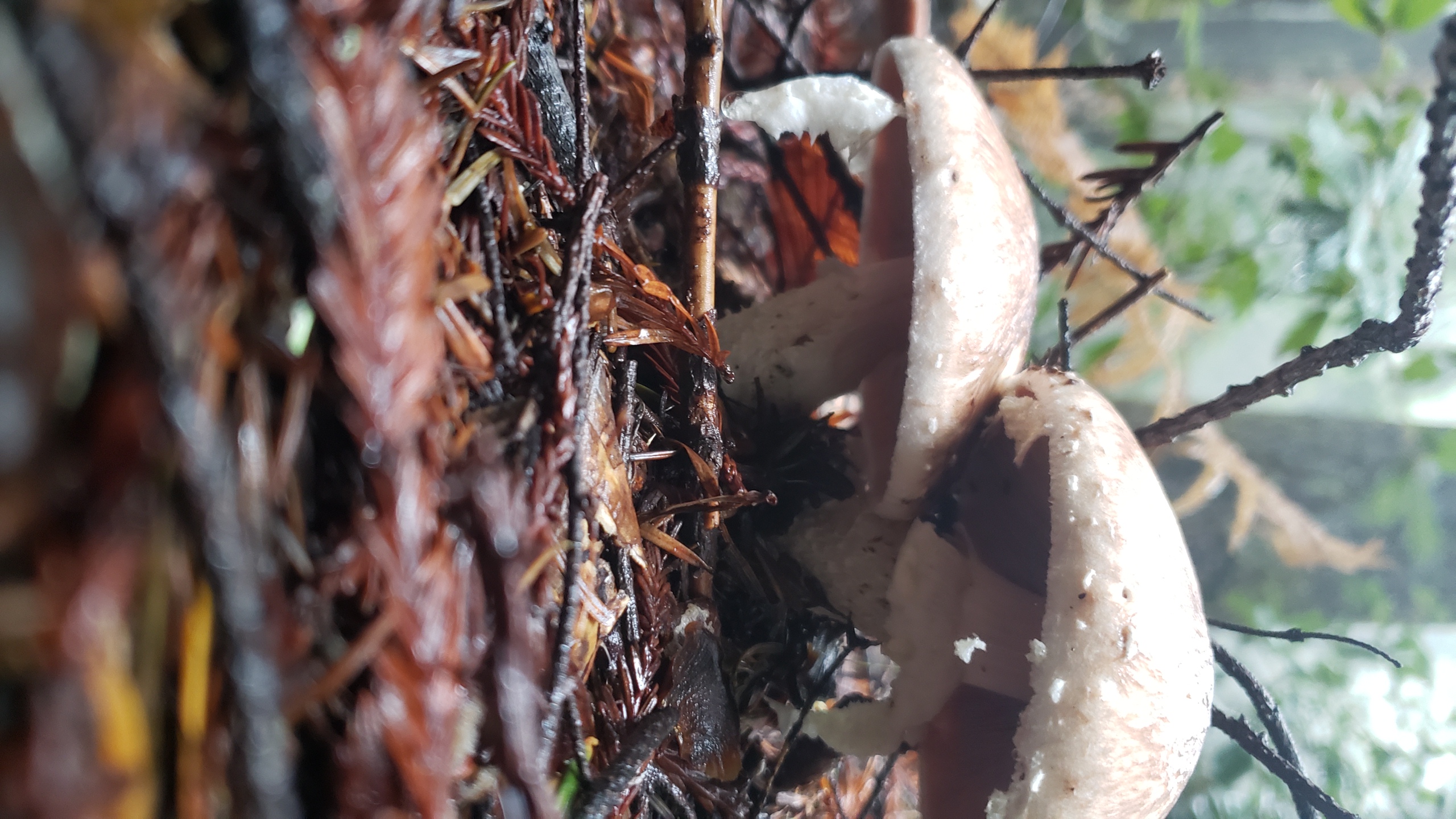
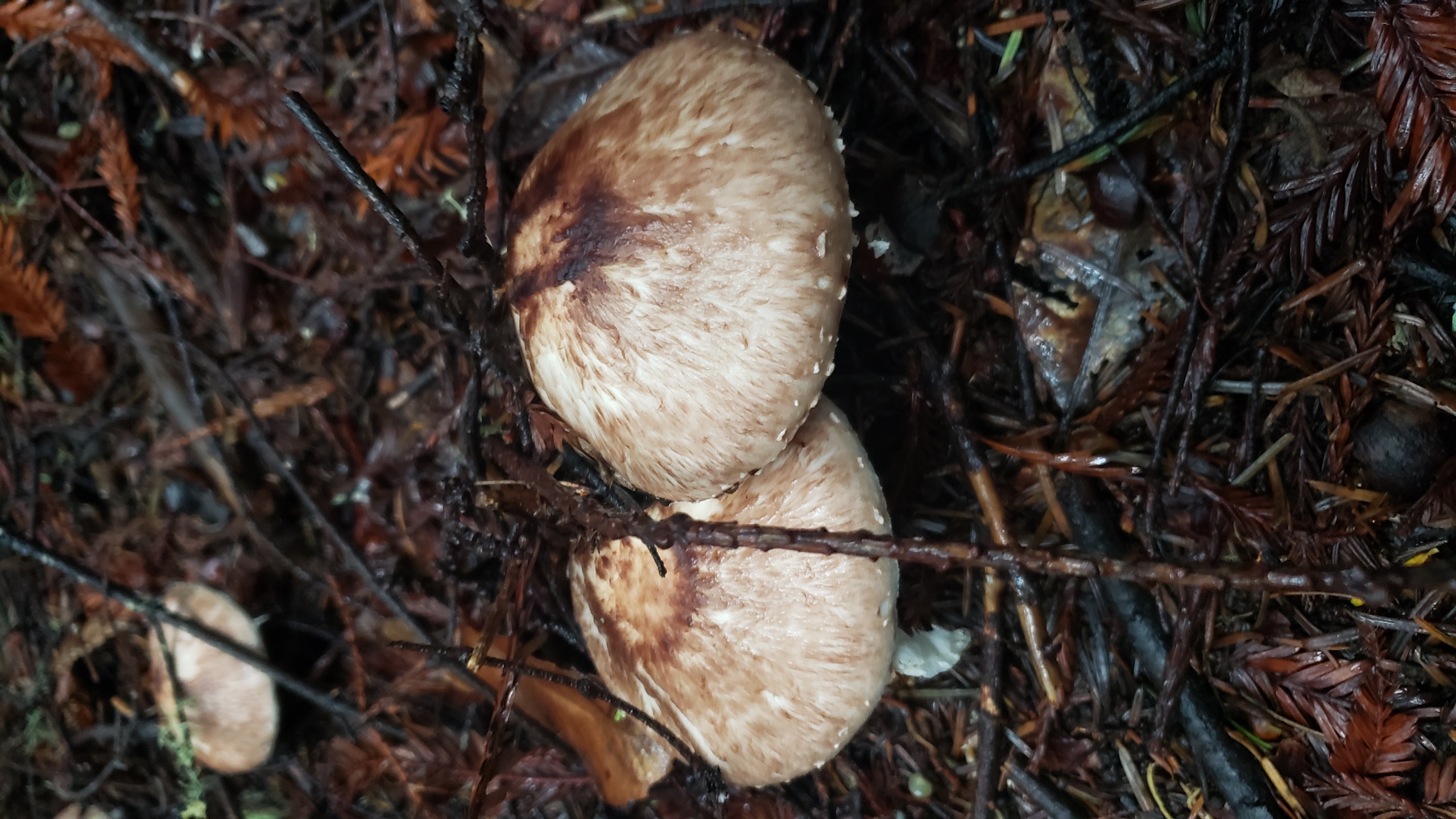
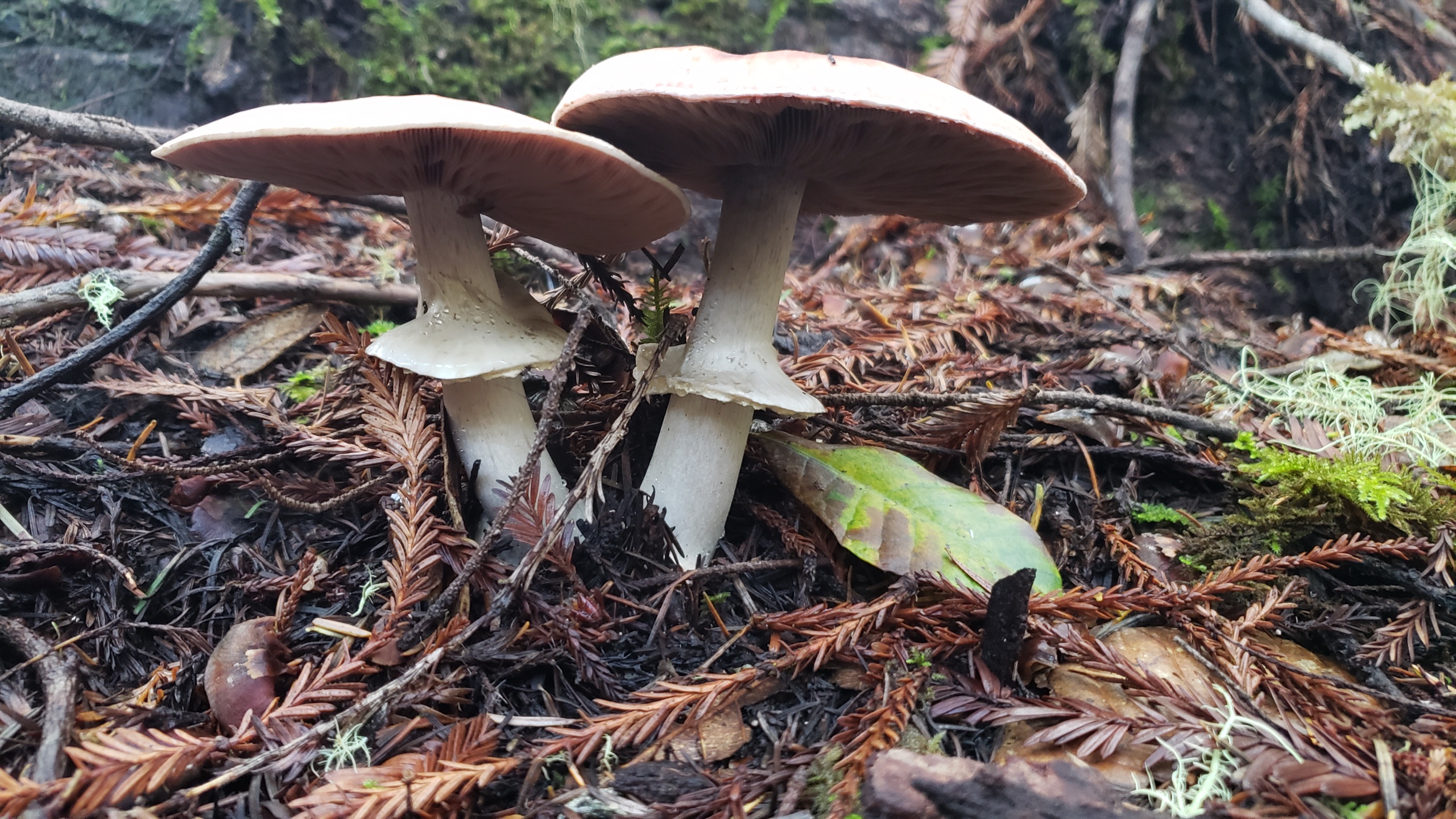
This wonderful coral mushroom is very painful to digest; though it is reported that the toxins are concentrated in the very tips of the coral, and the rest of the fungus is edible; however, I've never been hungry enough to test this hypothesis
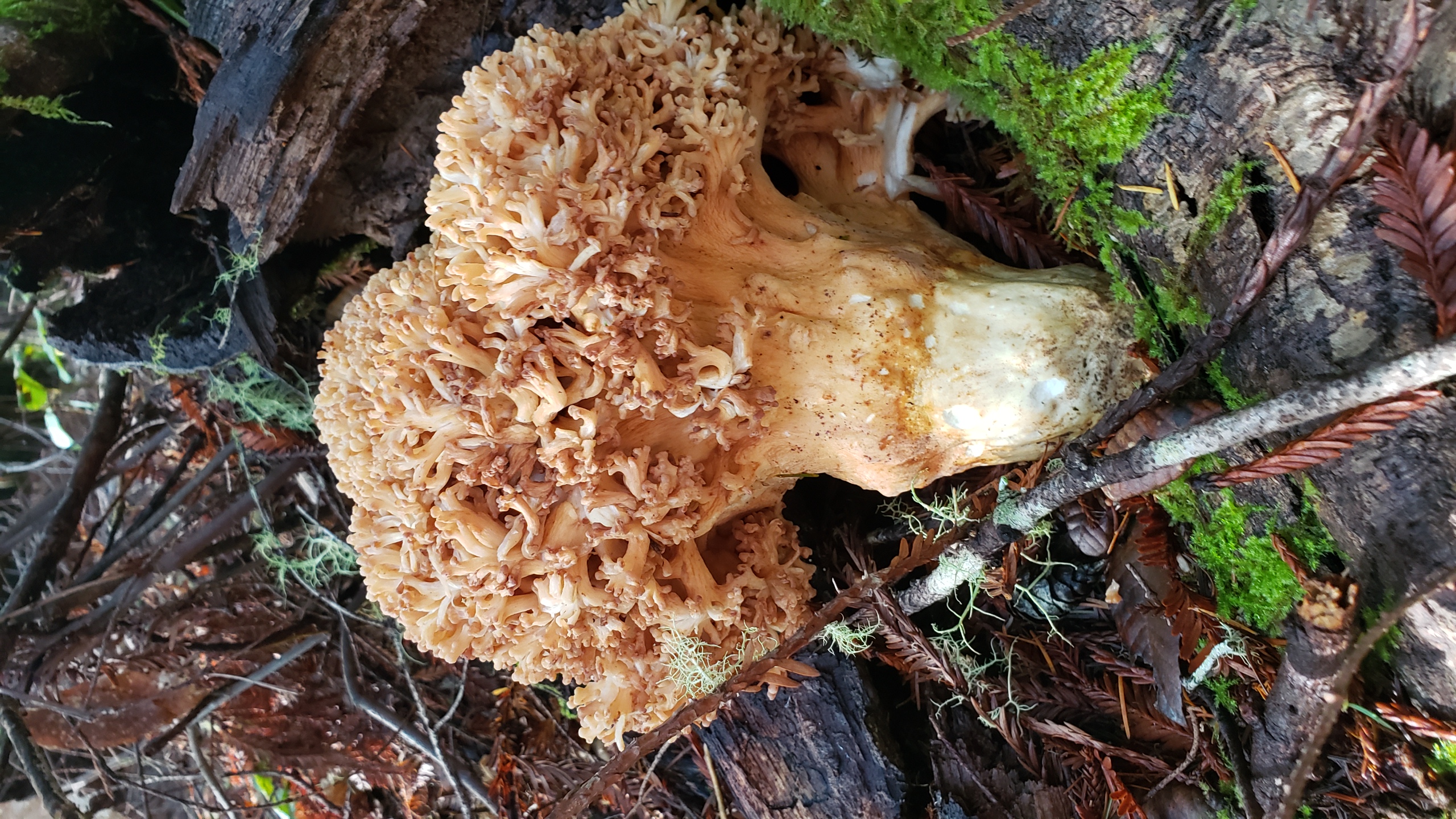
Polypores, with very few exceptions (like chicken of the woods, which is technically a polypore, but is not featured in this series), are not mushrooms you want to eat; many of them aren't toxic, but their wooden texture makes them very unappetizing. Some, like Inonotus obliquus, or the Chaga mushrooms, are considered medicinal, but are usually consumed as infusions
On the other hand, polypores are pretty, and are often used to manufacture dyes for wool and other fabrics
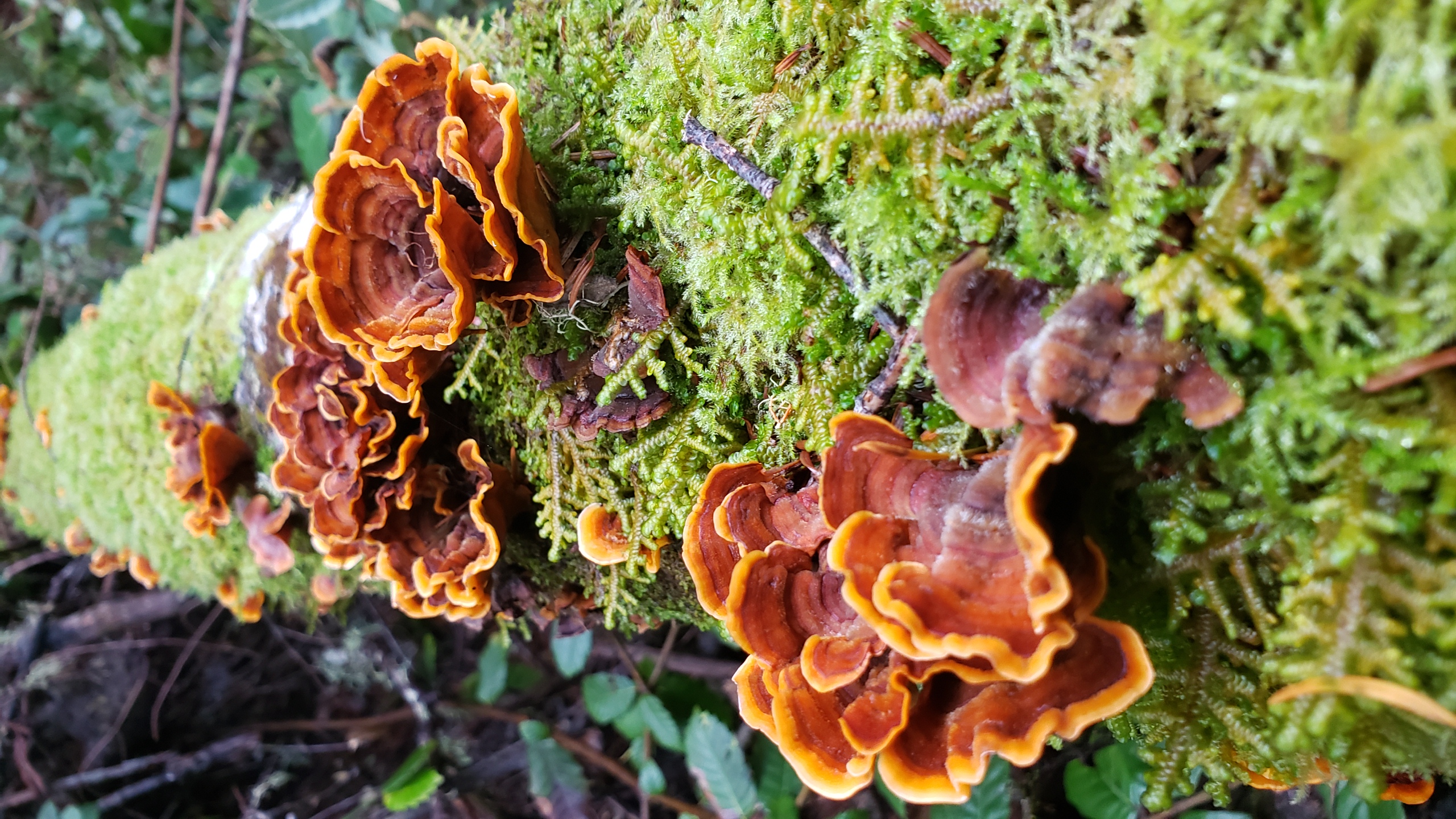
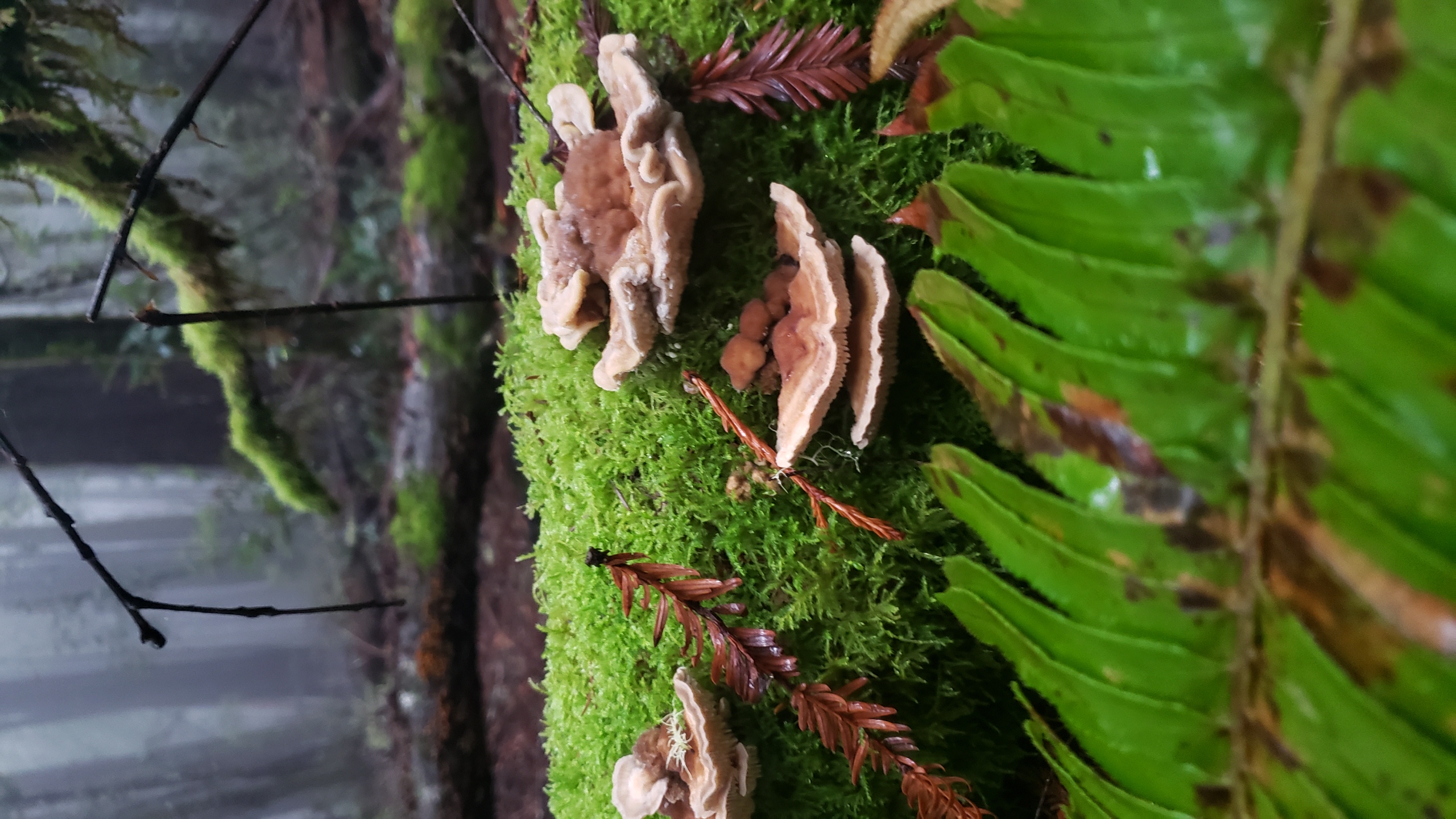
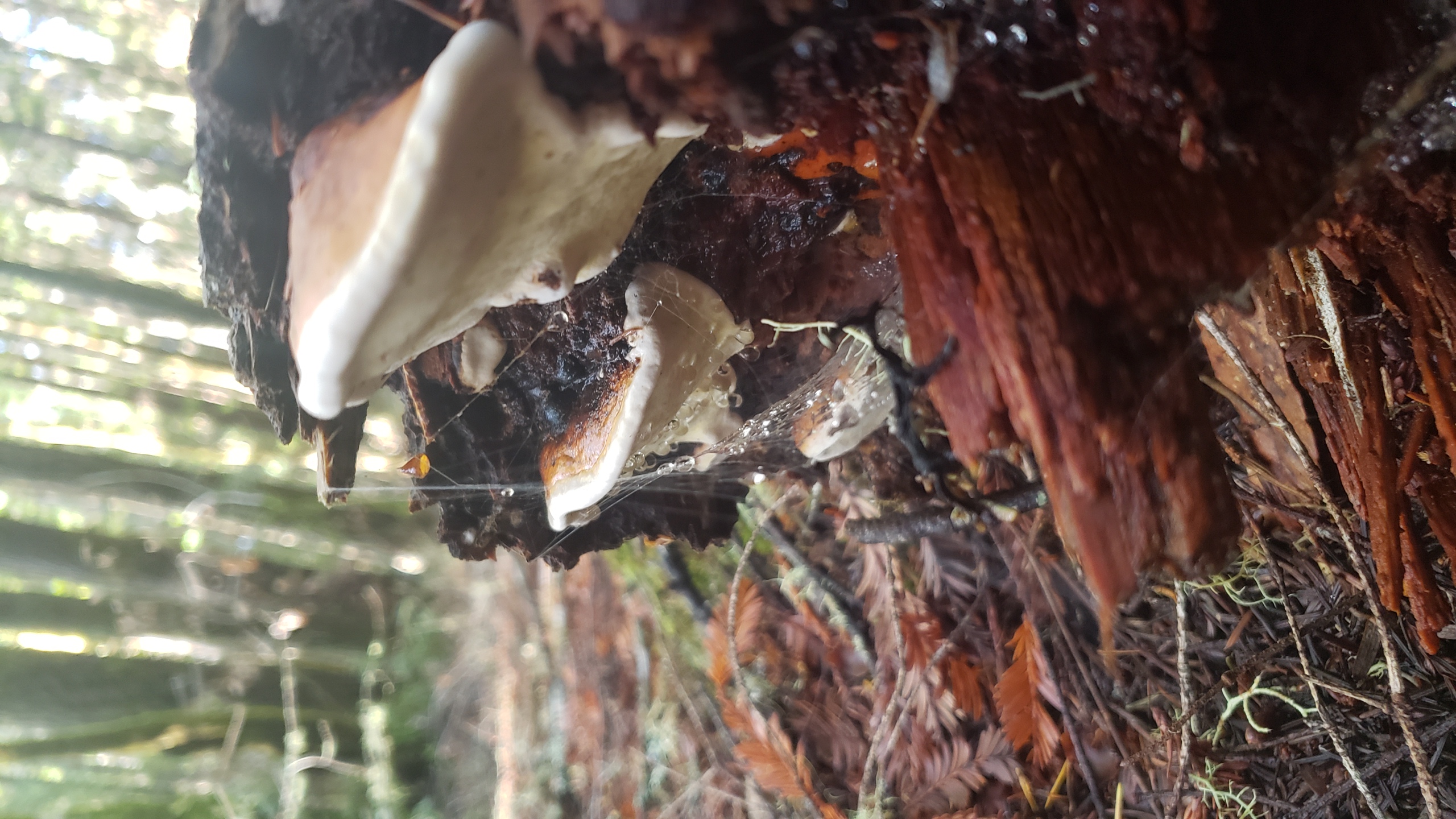
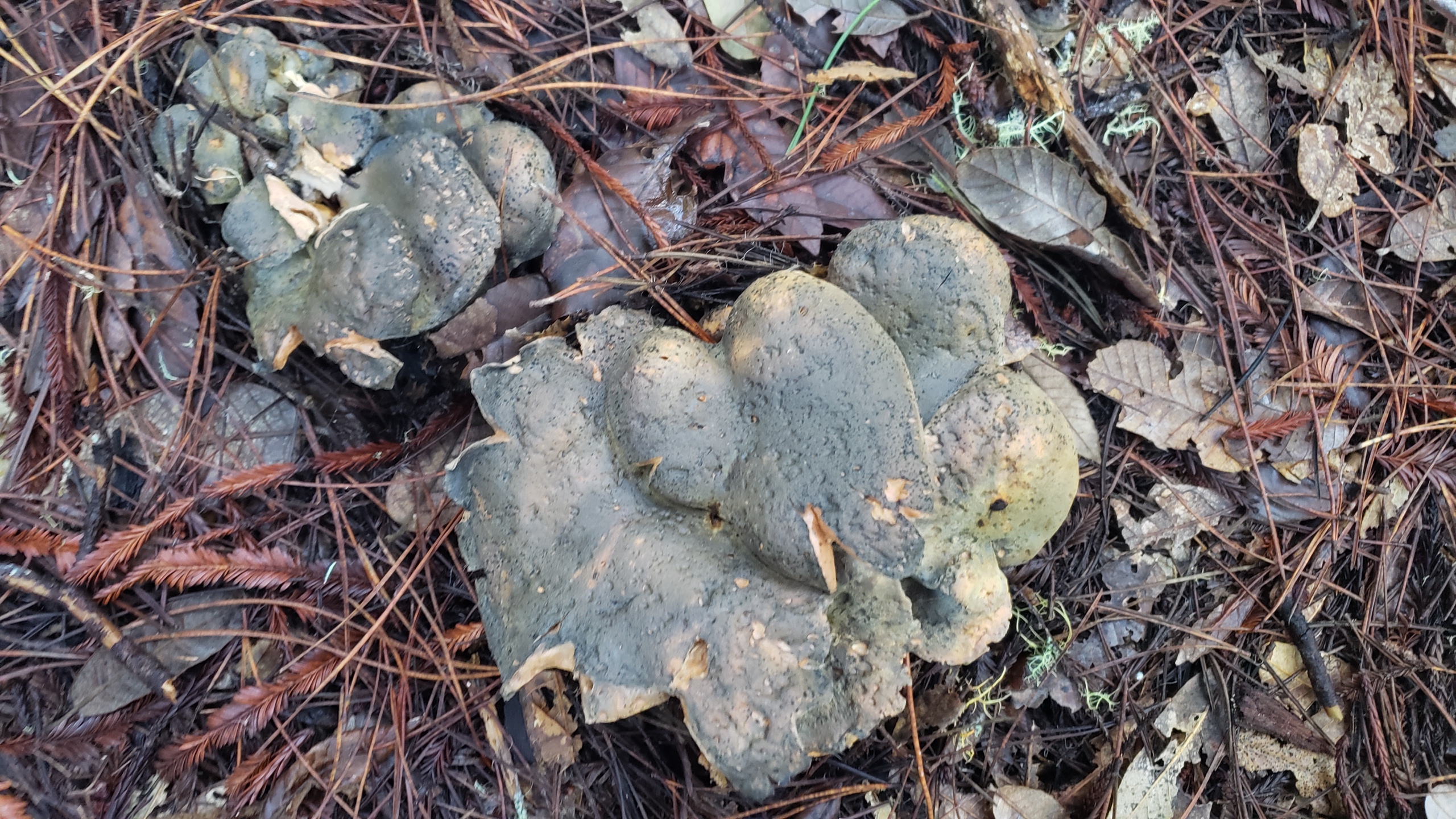
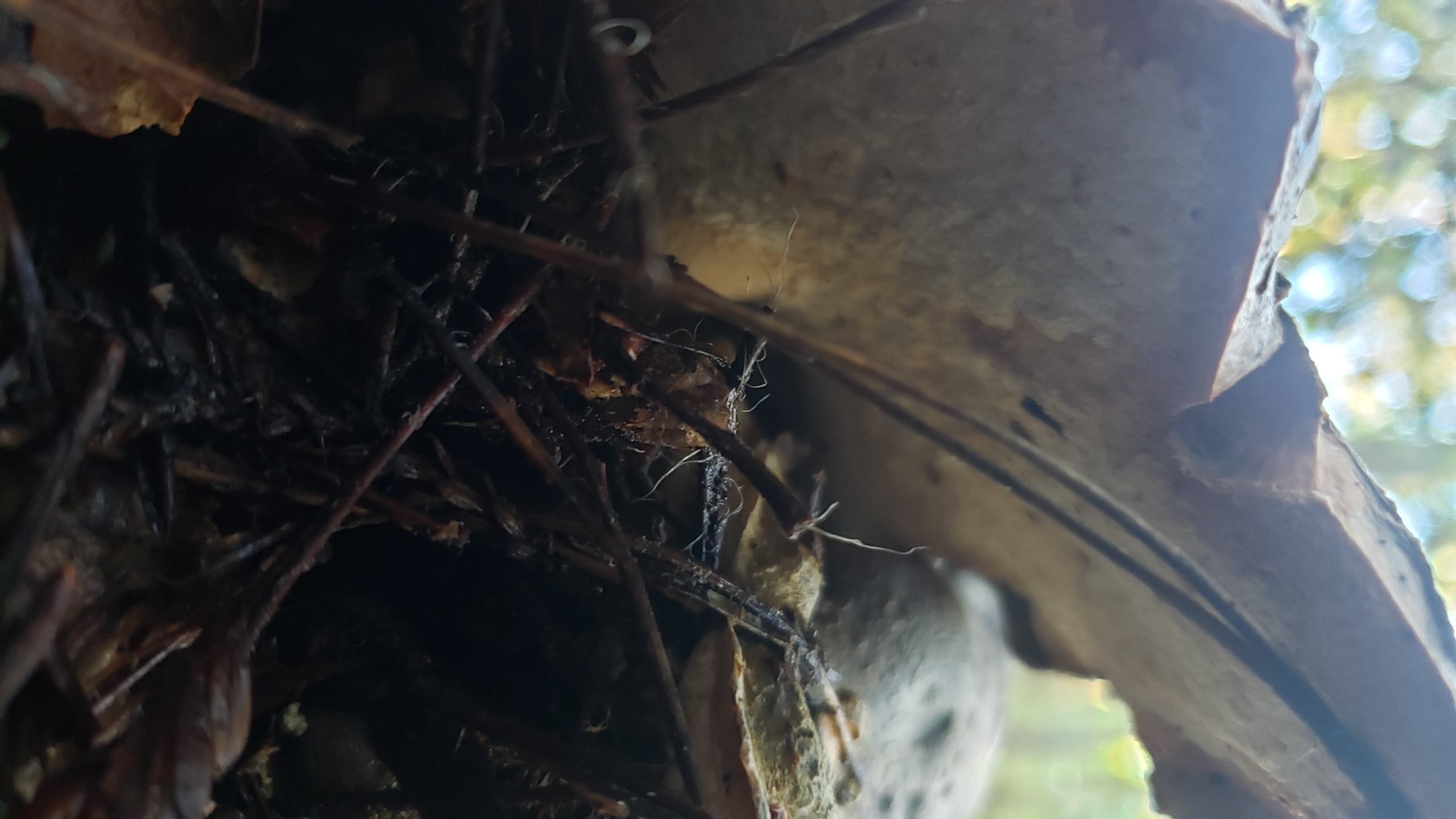
The genus of Russula, for the most part, consists of mushrooms that are edible, but not very flavorful. There are a few mildly poisonous species in the genus, such as Russula emetica, which don't look too different from their edible counterparts, so I prefer to stay on the safe side and never forage them
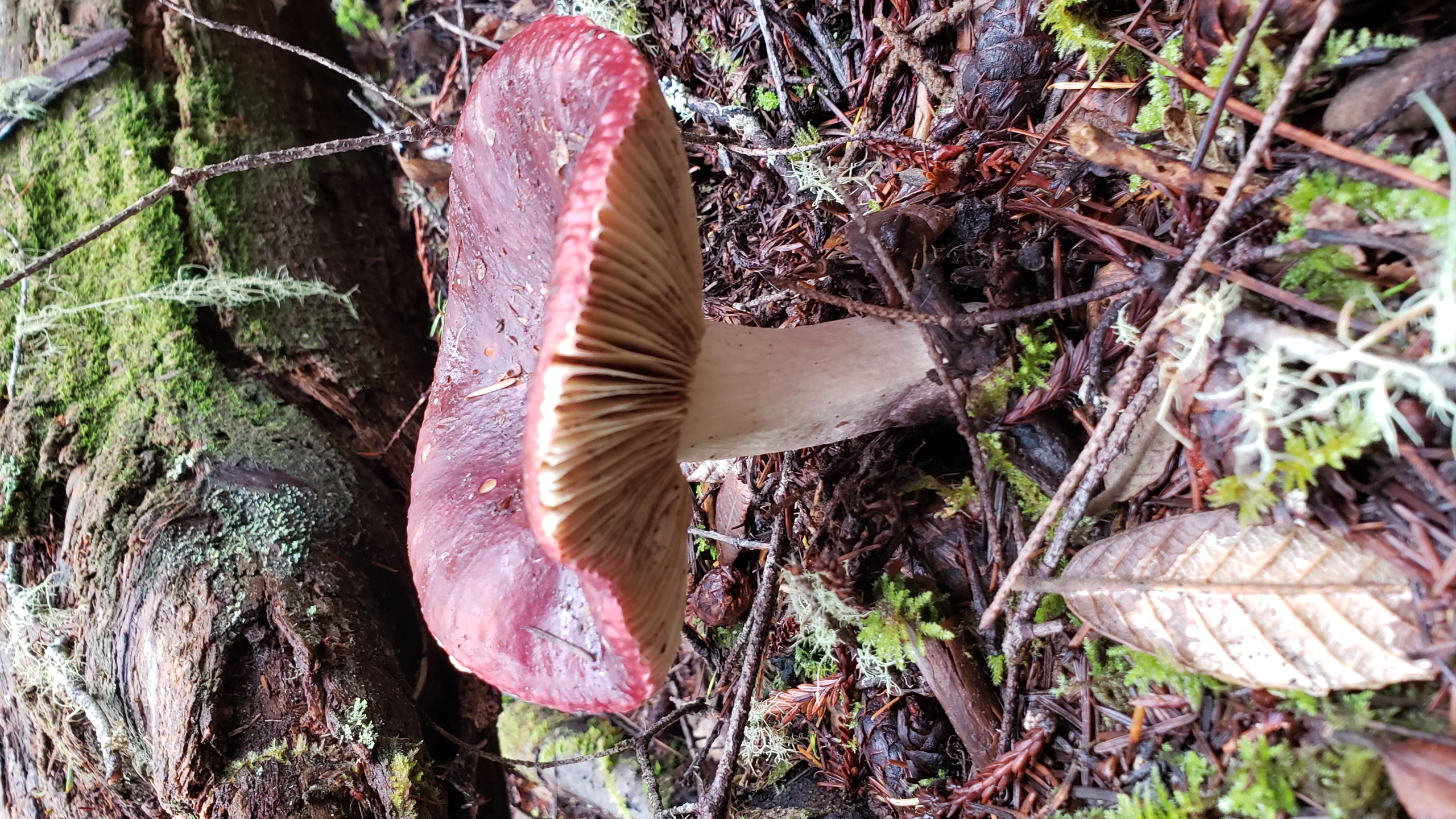
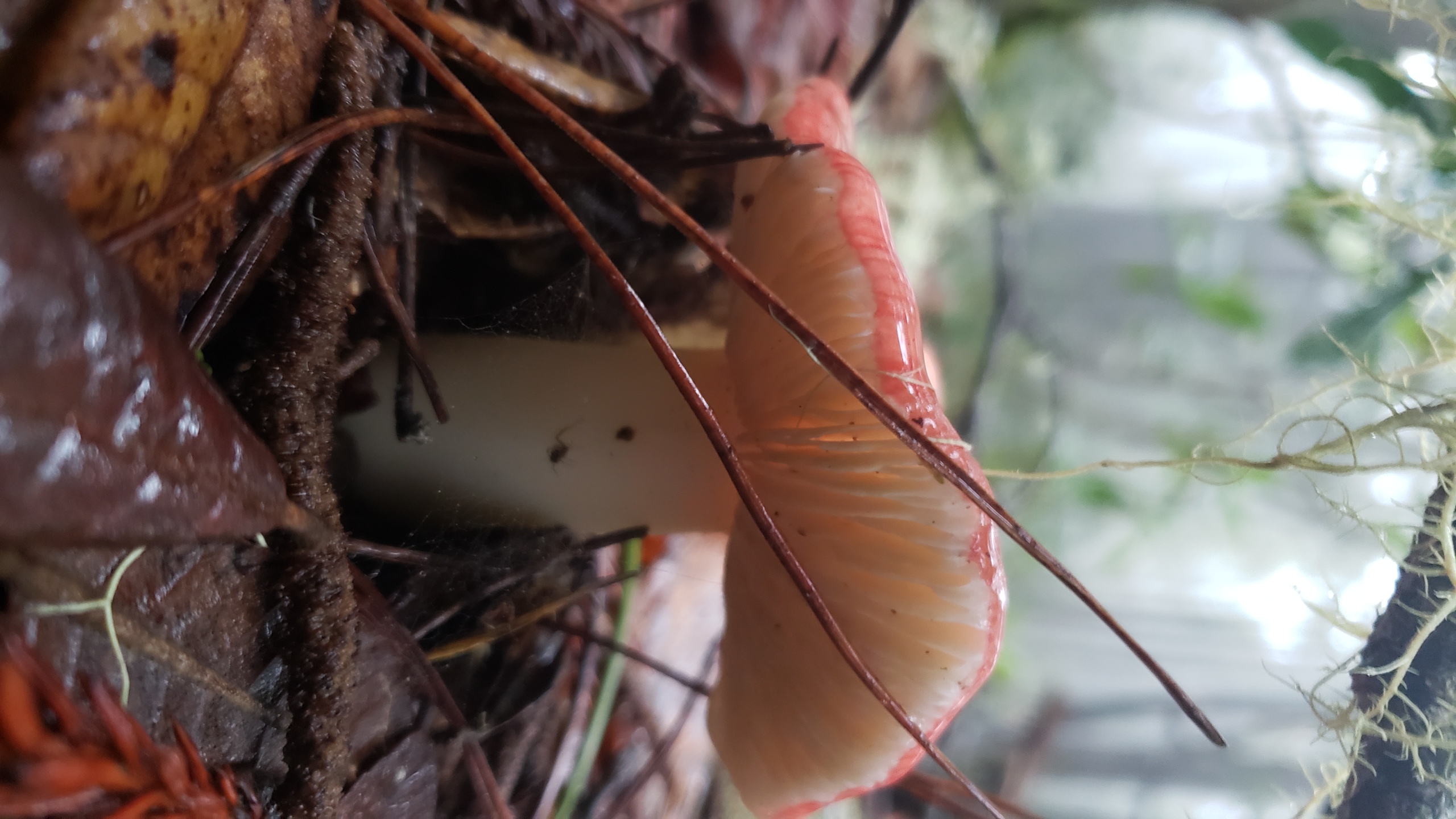
I'll just put the rest of the pictures here; I believe i know at least genuses of some of them, but not 100% sure, and don't really know the species; i know there's at least a couple cortinarius species here, and they are packed to the gills with Orellanine which will kill you. Some are probably not deadly, but I'm not 100% sure I can accuately identify them; I believe there's 1 suillus in the mix, and they are usually edible, but obscure suillus species often have an obnoxious taste
So, just enjoy the visuals and please resist the urge to eat them
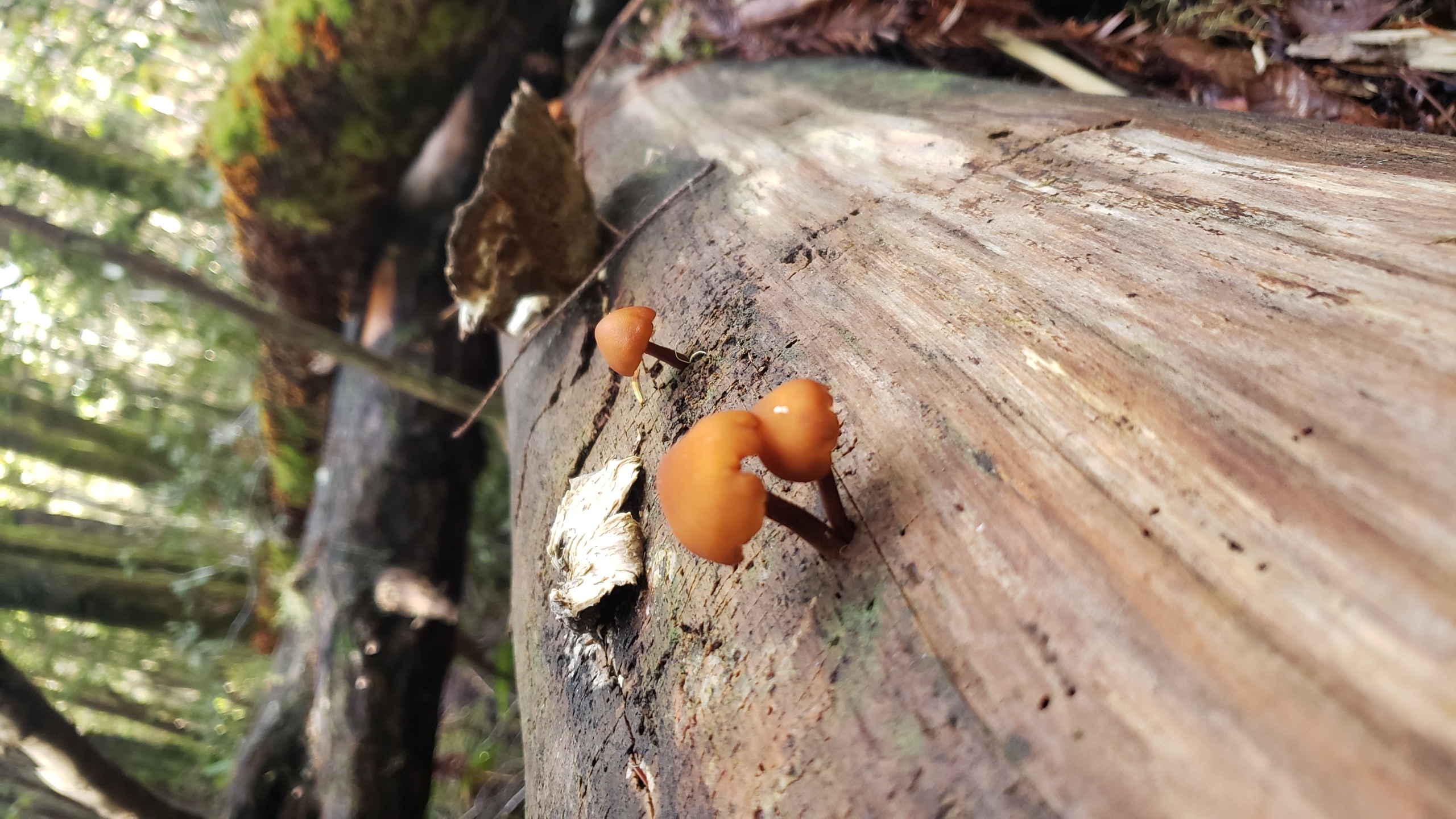
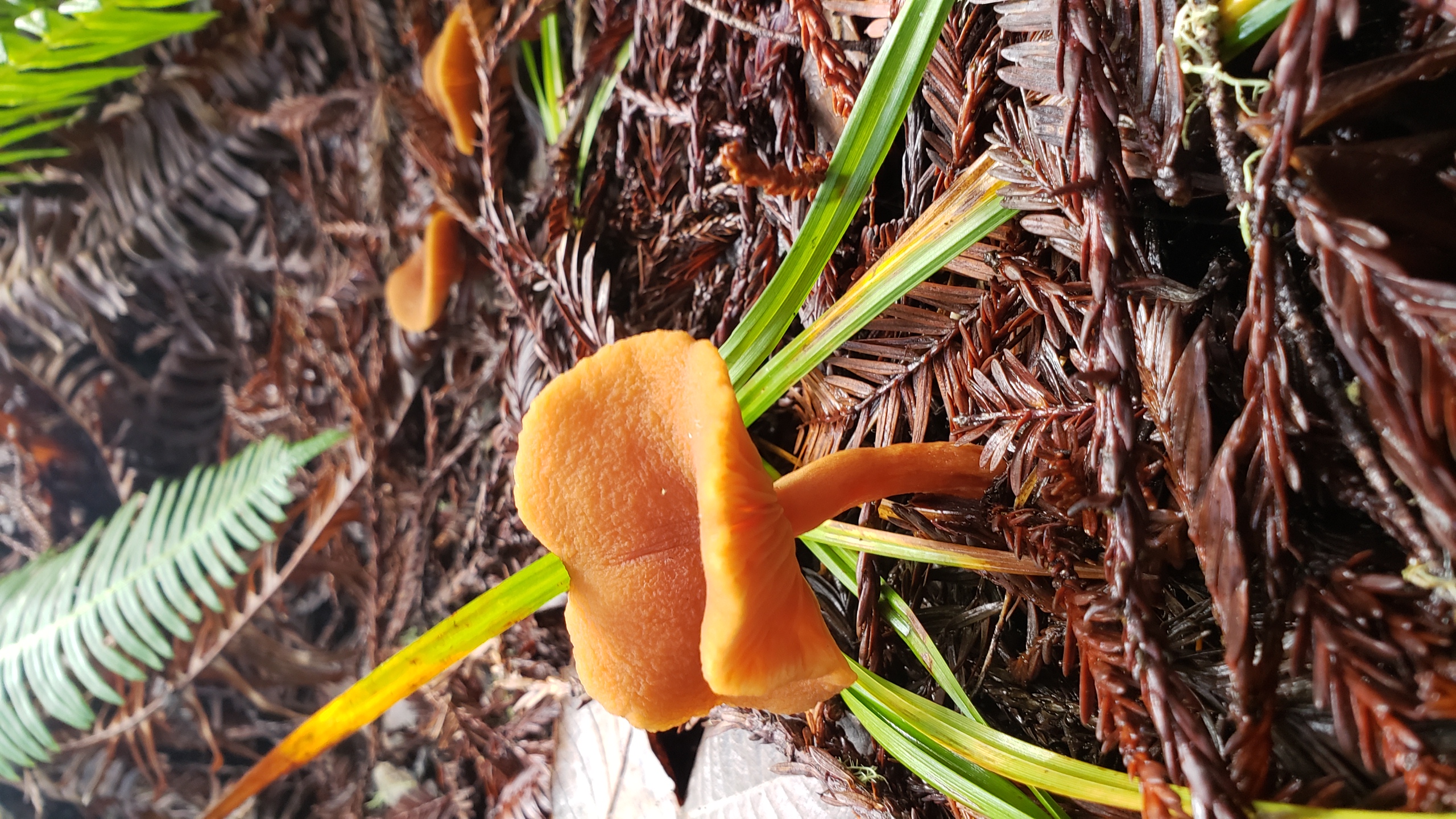
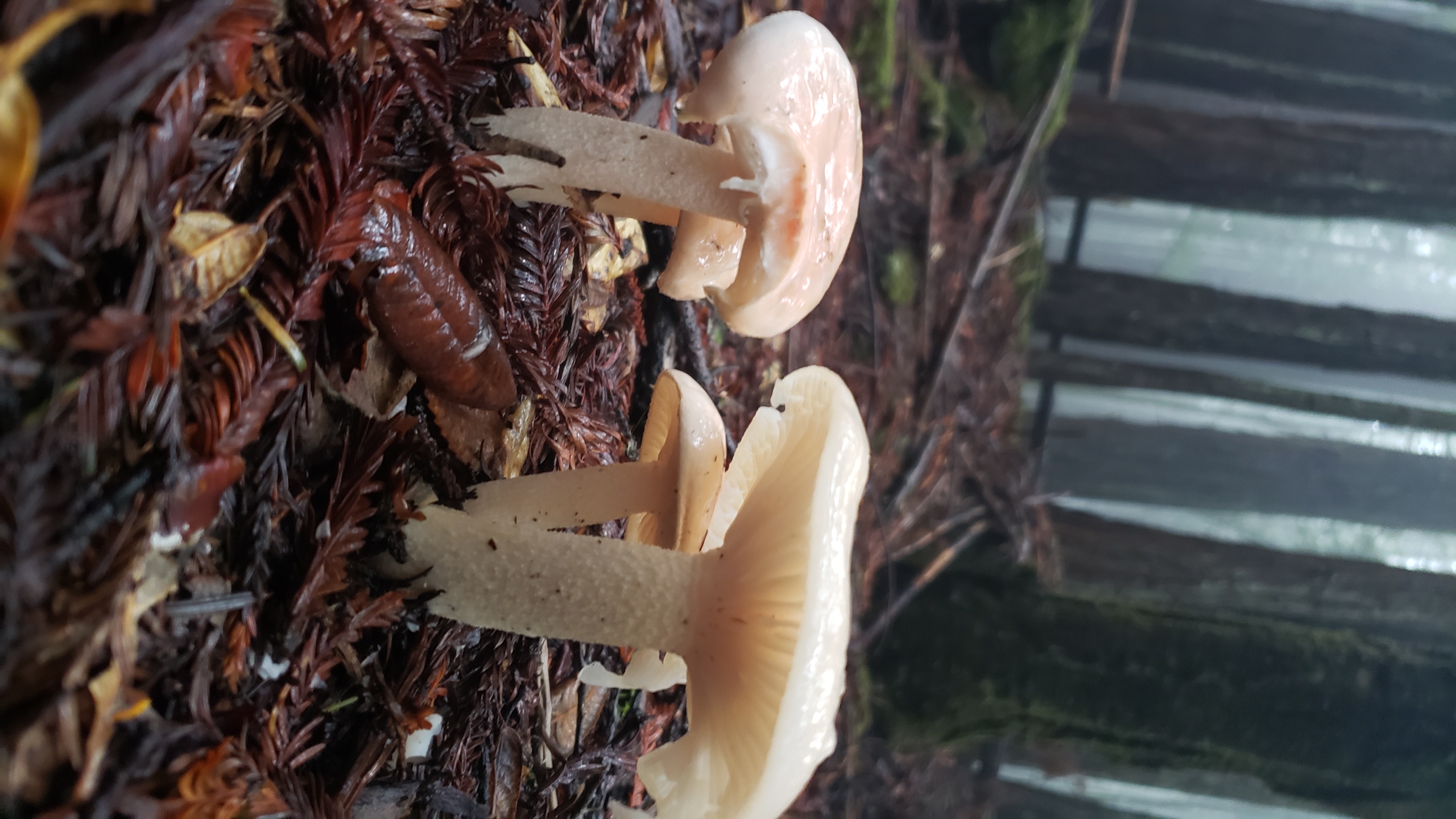
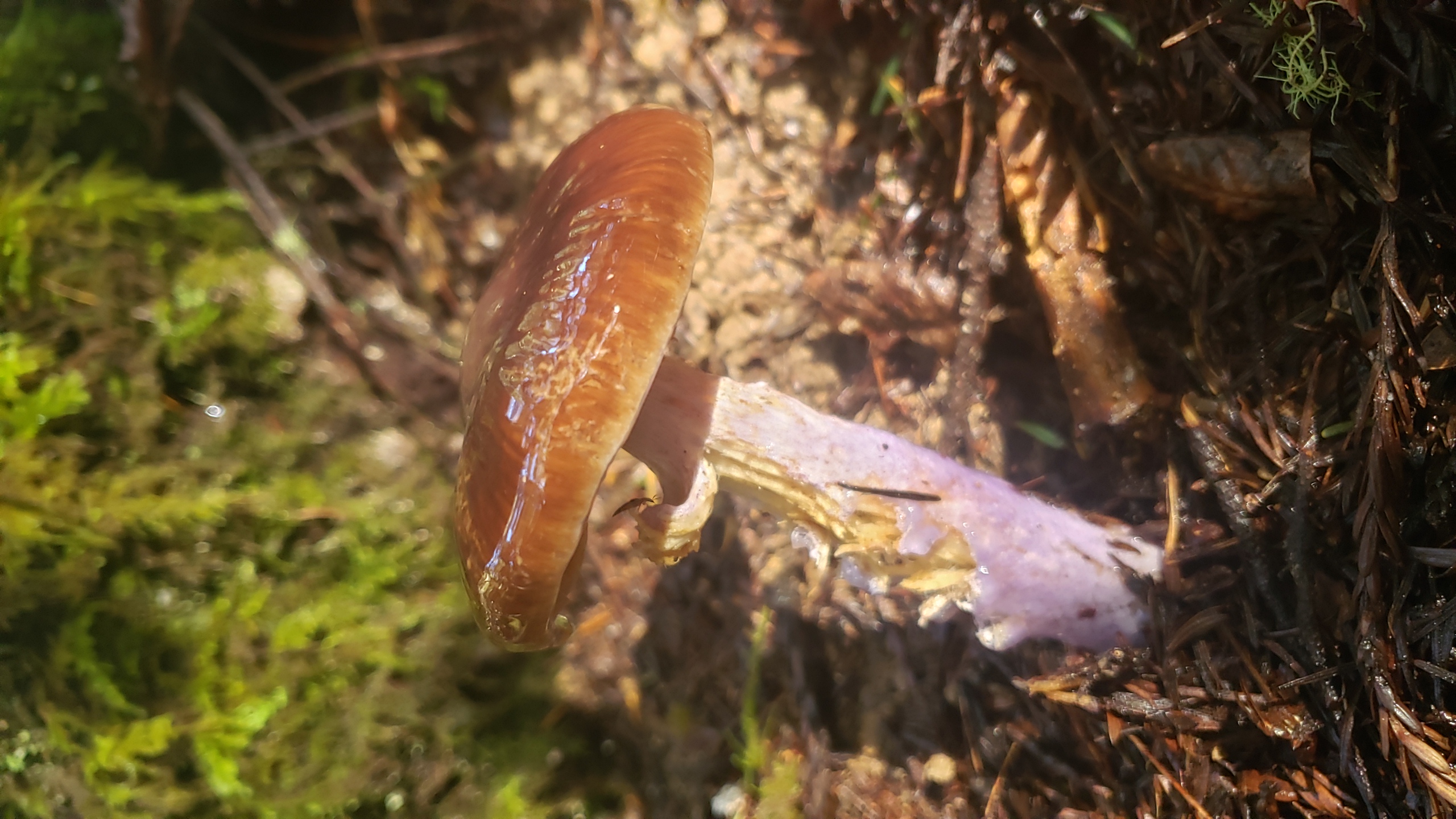
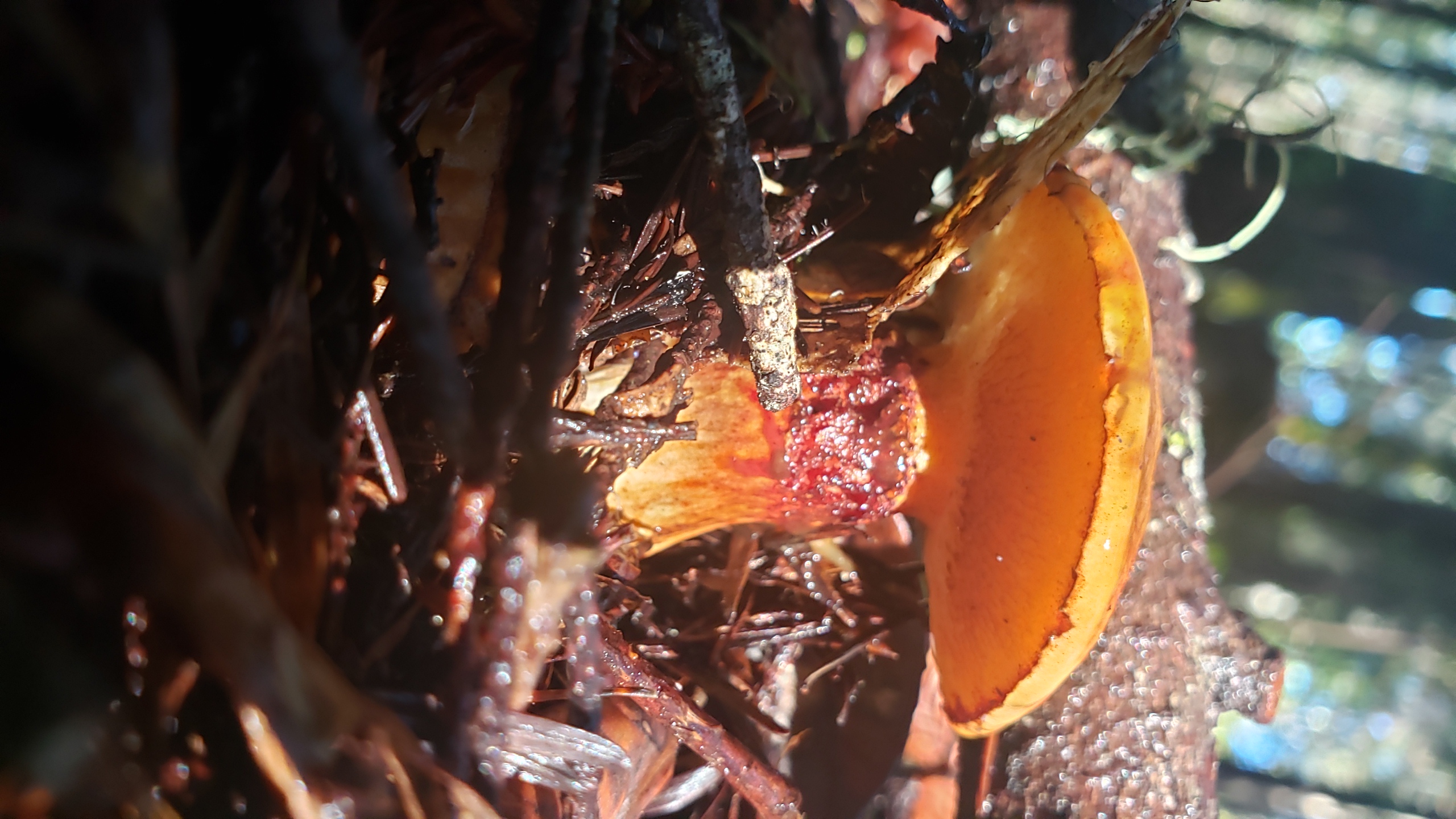
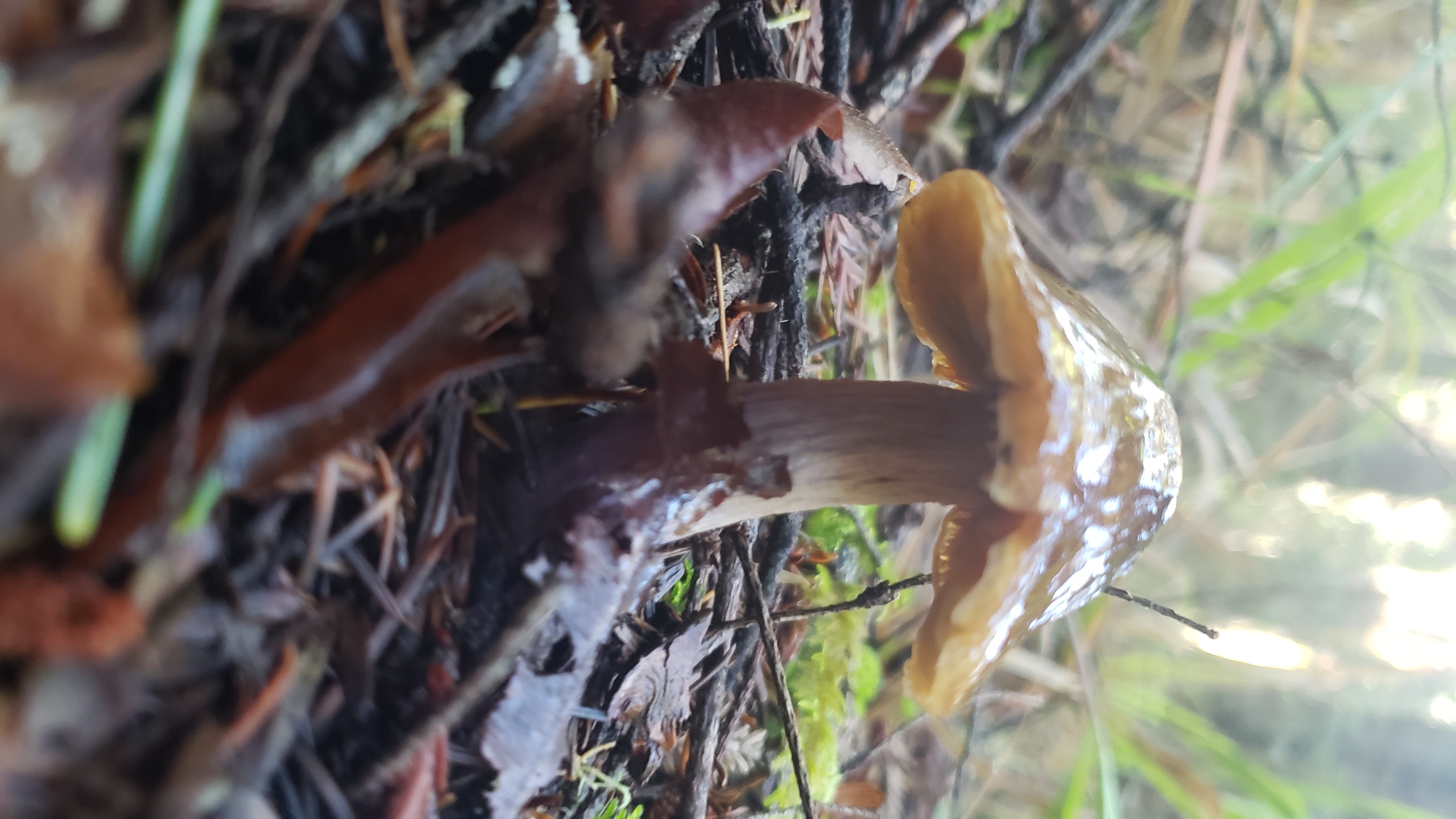
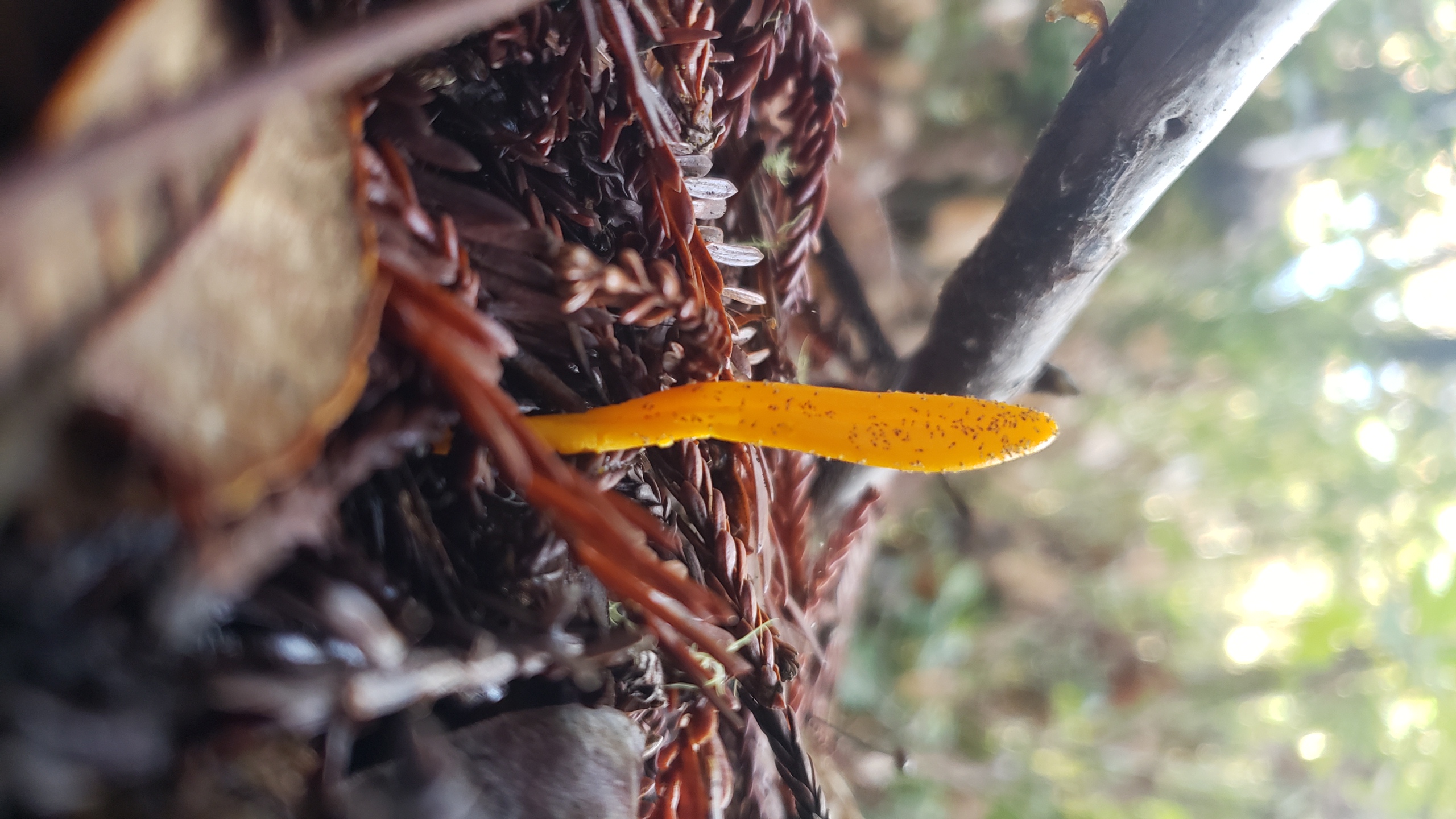
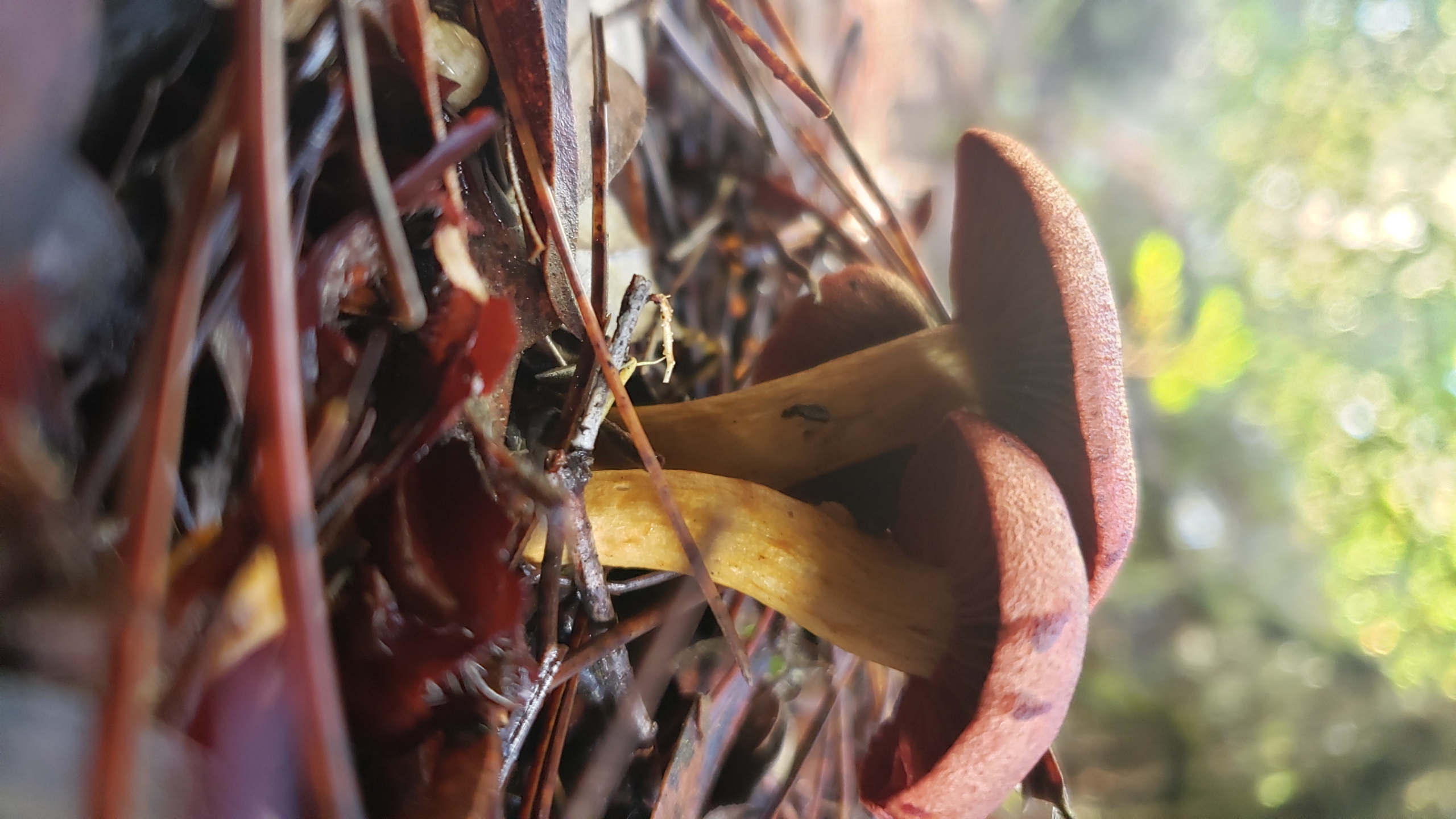
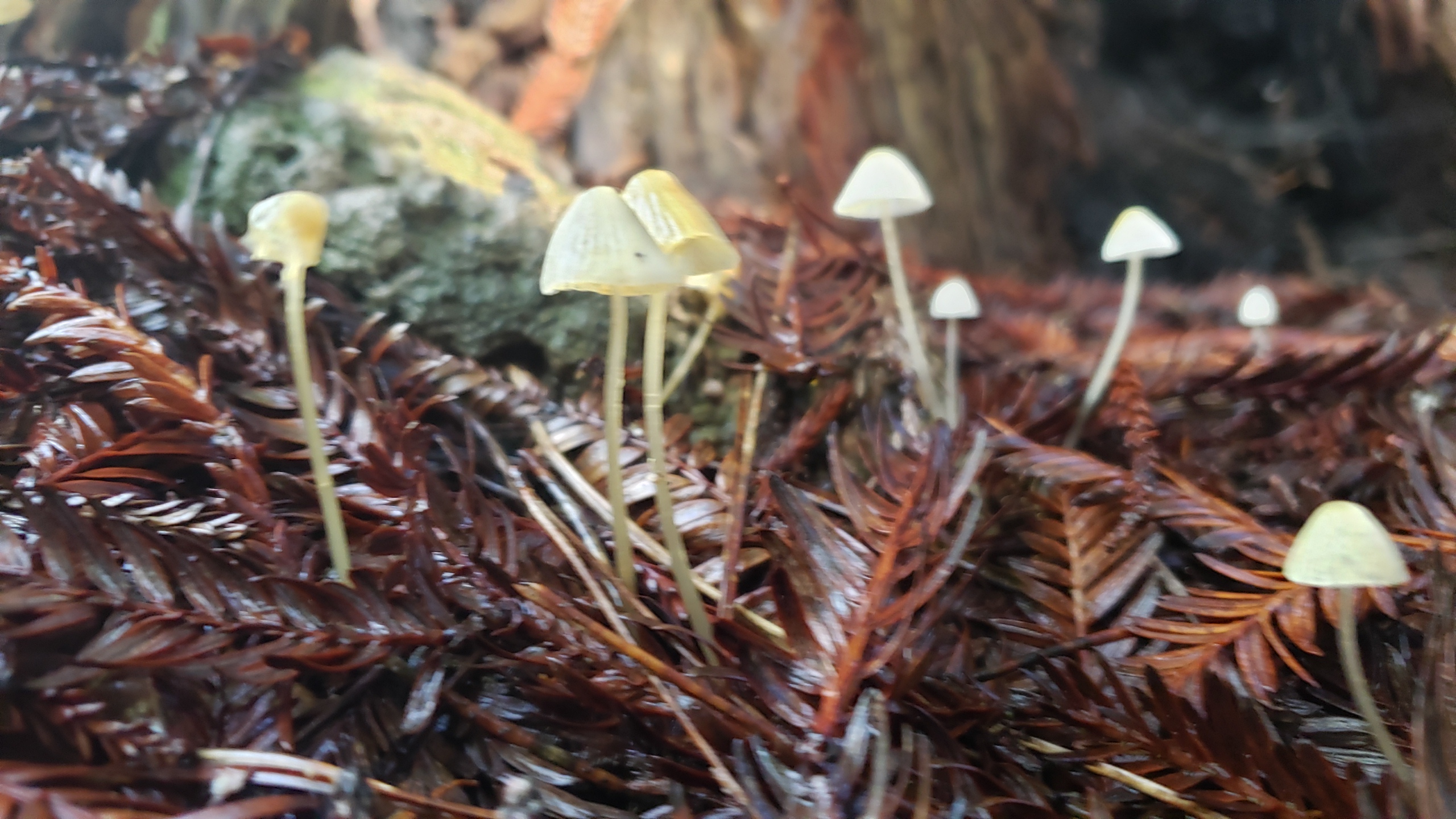
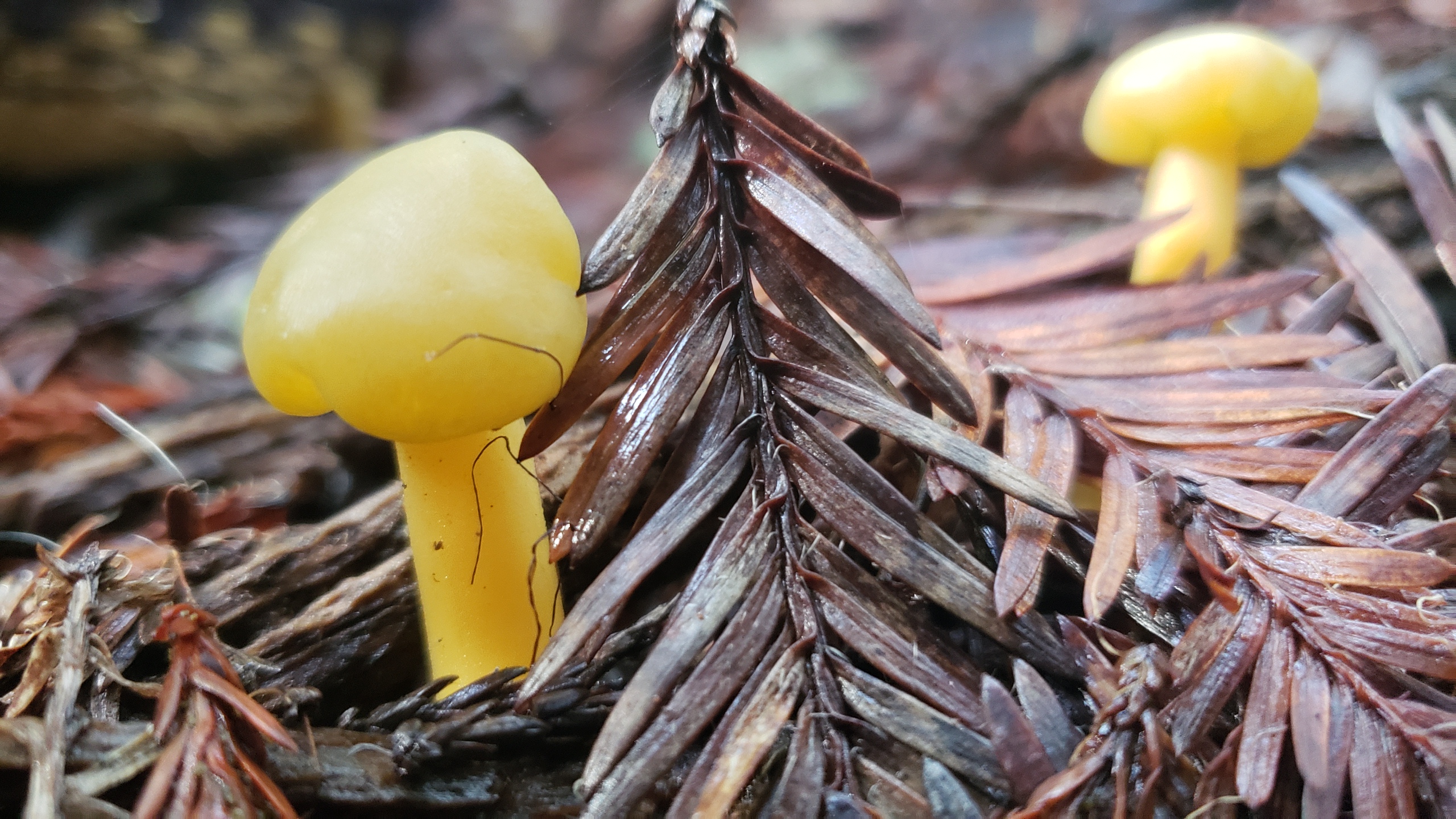
So, let's assume you've been successful and got yourself some premium quality wild mushrooms. What do you do next?
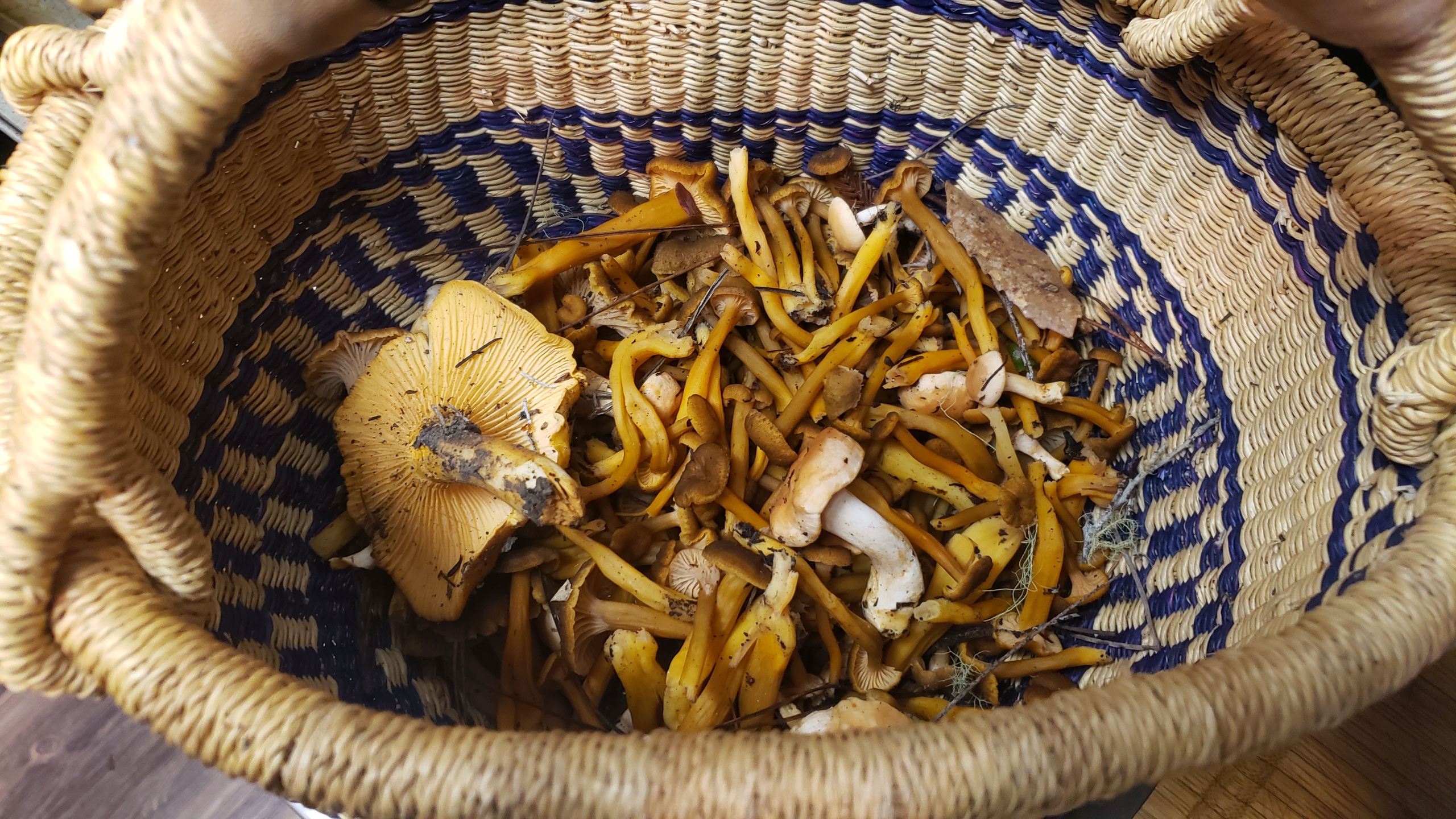
First of all, you need to clean them. You don't want to eat all those pine needles, also the sand crunching on your teeth is a little distracting when you're trying to enjoy your exquisite meal. I try to use a toothbrush and water, but it's usually necessary to cut off some parts at the base of the stem that have the soil ingrained in them
Then, there are several ways to cook them; the most russian way is to pan fry them with some caramelized onions, gently seasoned with dill tips and black pepper, and a generous scoop of sour cream added in the end
A mushroom soup is also a good option - i start by caramelizing some onions, and then adding roughly 50% mushrooms 50% potatoes by volume. A bit of carrots are a nice touch too. Cook for a couple hours, till potatoes start disintegrating. A bit of sour cream in the end is optional, but recommended
But today I want to show you the easiest way of cooking mushrooms I know - just stick them in the rice cooker!
Start with some rice, and a generous amount of soy sauce. Add a recommended amount of water; you can do a little less, since there'll be a lot of water coming out of the mushrooms, but a regular amount works fine
Then pile the mushrooms on top; be generous, mushrooms shrink from cooking, so it's hard to add too many. A bit of carrot wouldn't hurt, but is optional. Lastly, add a bit of butter, or, even better, chicken grease. And yes, when you make chicken in the oven, always save the grease
Then the seasoning; This time i went with tumeric and cayenne pepper, but feel welcome to improvise; just don't put too much, you don't want the spices to overwhelm the mushrooms
Also, i recommend using brown rice for this, since it cooks longer and you can be sure mushrooms are properly cooked. With white rice you might want to pre-cook the mushrooms a bit
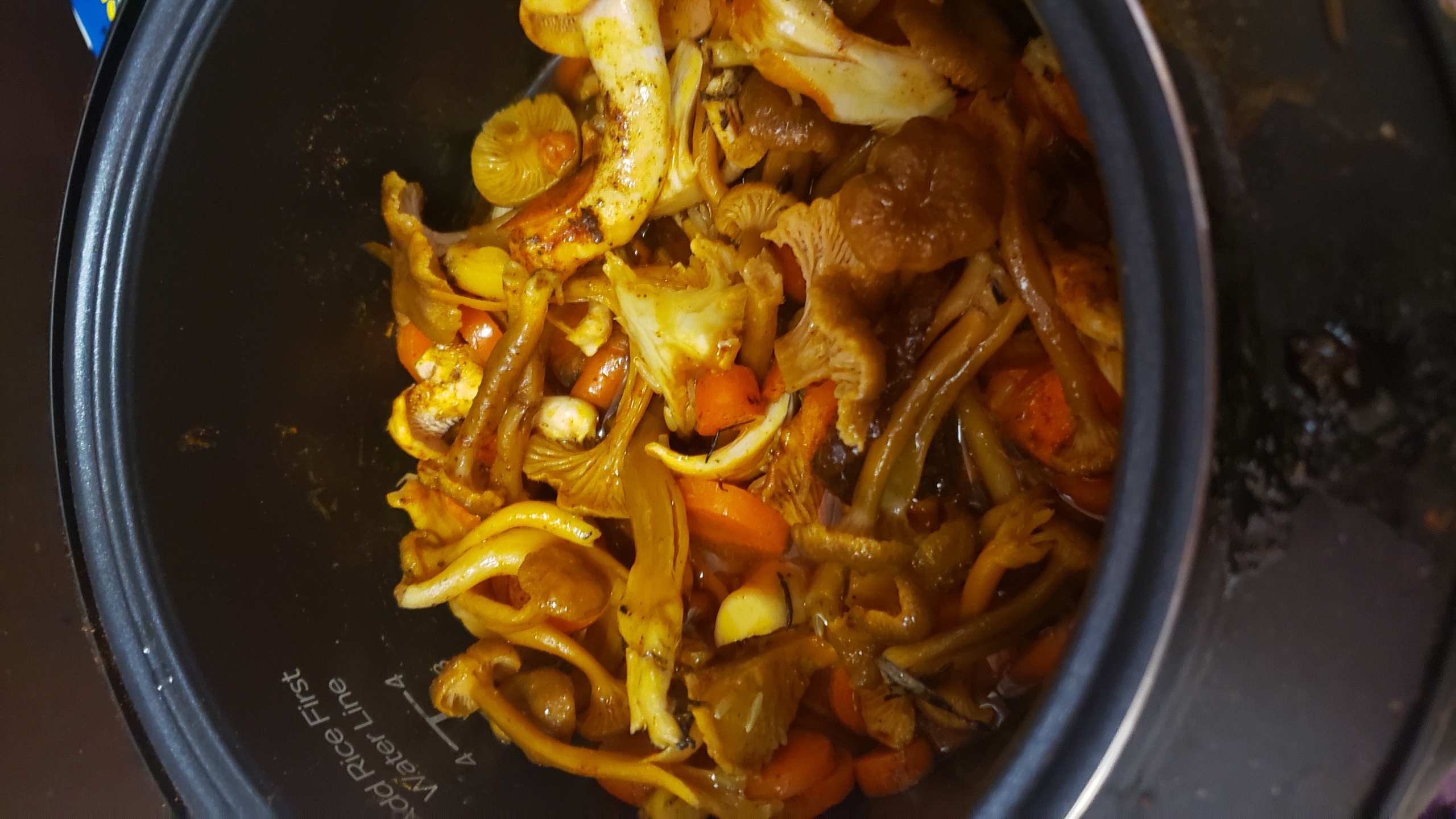
Then you just let the rice cooker do its thing; play a video game for an hour or something
In the end you get a good serving of mushroom pilaf that's ready to consume
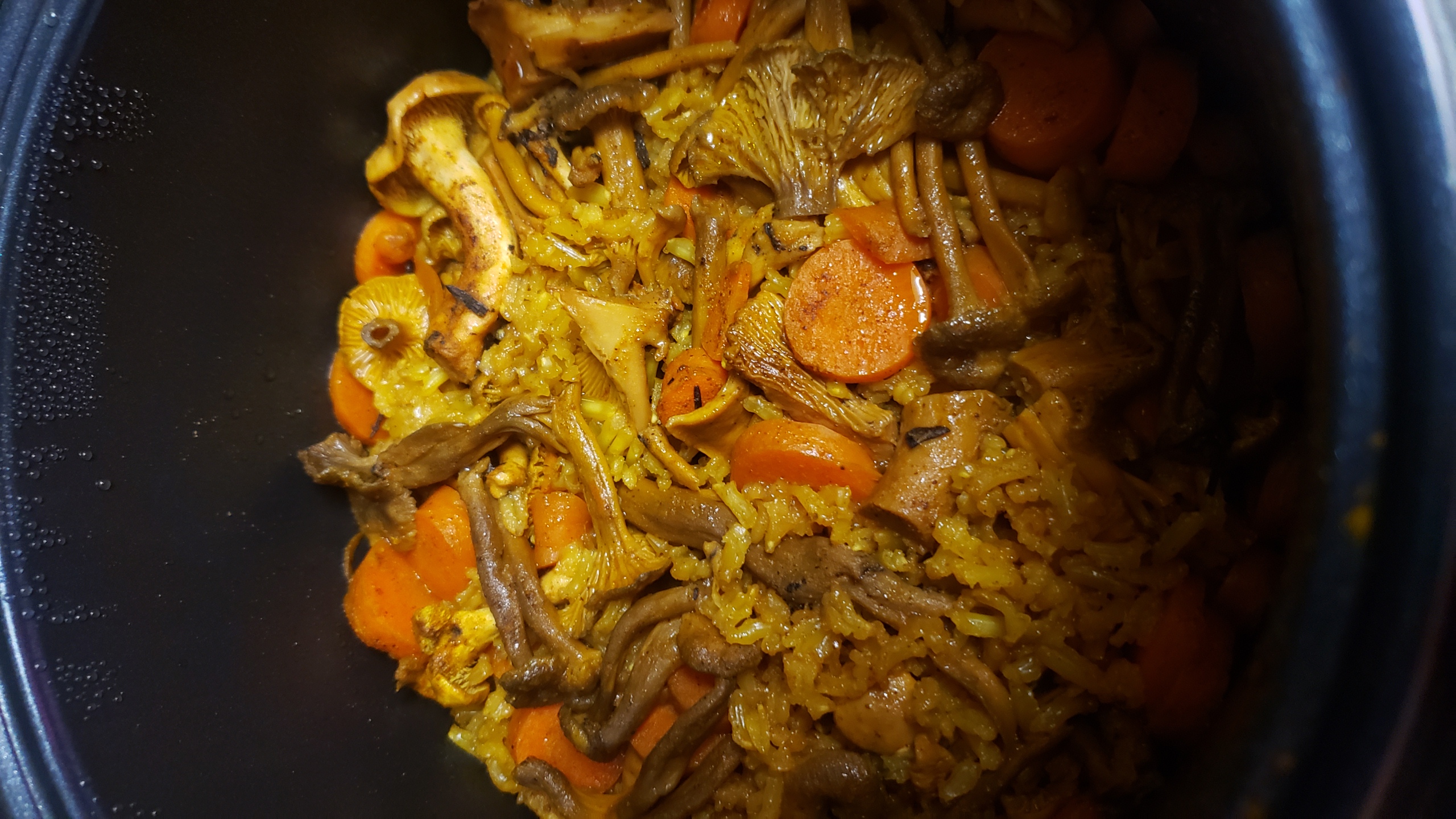
Just dump it on a plate. If you live in California, you must add some sliced avocado as a side - it's the law.
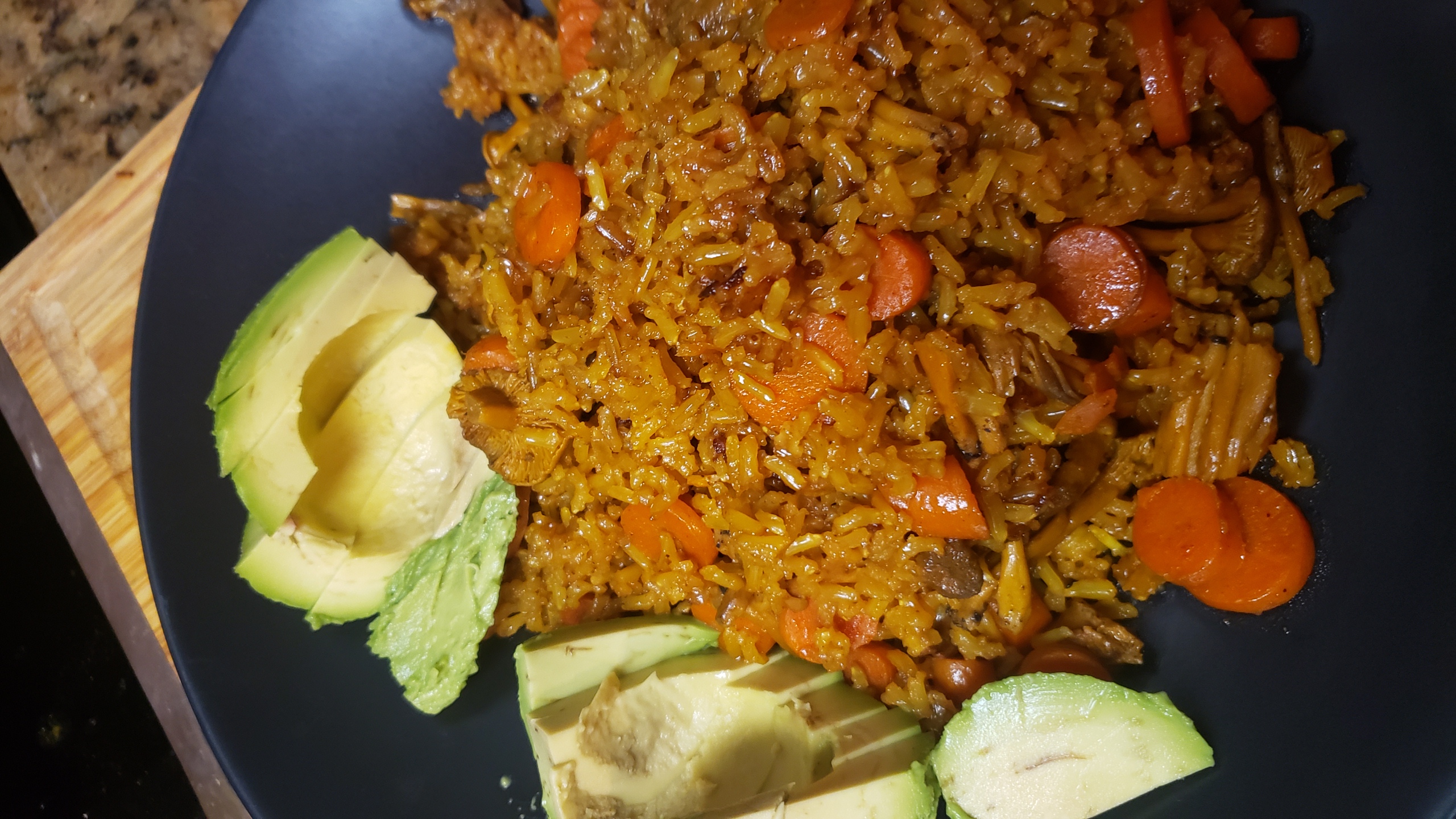
Enjoy your well deserved meal!